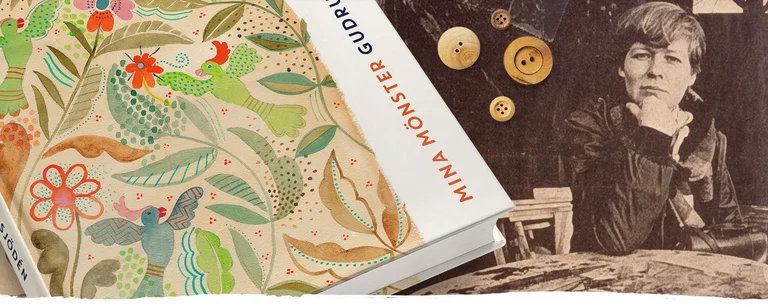
Gudrun’s history
Gudrun Sjödén’s colorful stripes and bold pattern combinations have captivated the world since 1974. She creates unique, functional and timeless designs for all ages. 50 years of creativity – 50 years of history. Throughout our anniversary celebration, we will be releasing the story of Gudrun’s exciting artistic journey, decade by decade – from the initial step into the business world to the global distribution of Gudrun Sjödén’s unique designs.

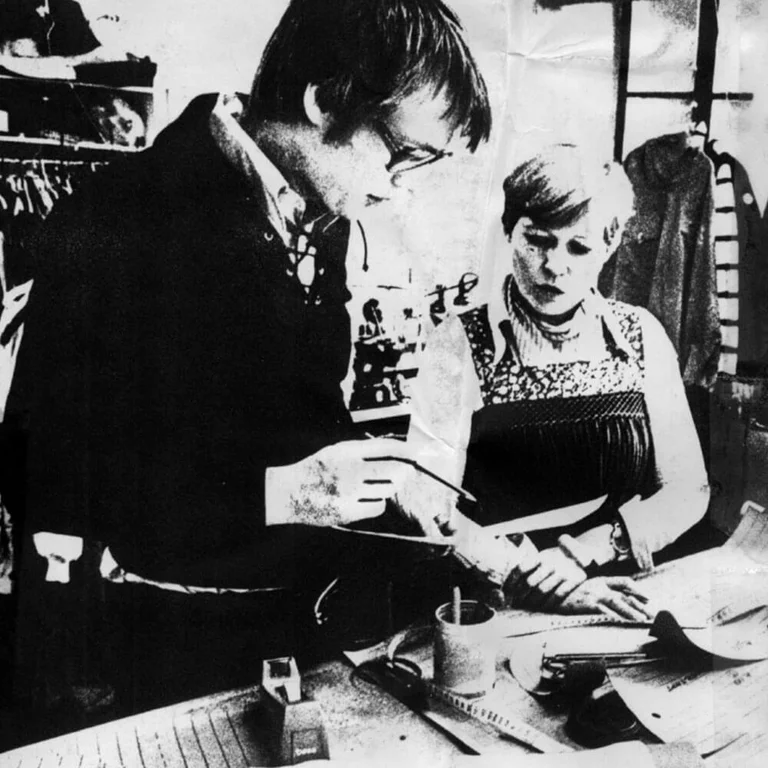
1974
Gudrun starts her own company
The first collection is launched and Gudrun Sjödén becomes a brand.
After studying textiles and fashion and with several years of experience as an in-house and freelance designer, Gudrun decided to take the plunge: in 1974, she founded Gudrun Sjödén AB. The big chains were producing her pieces individually, but Gudrun was designing full collections and always viewed her garments as part of a whole. She would finally be able to embrace and develop everything she had learned throughout her studies, which made her the distinctive designer she is today.
The new company had a clear purpose: to create, manufacture and sell designed and coordinated garments for active leisure. Sales at that time were aimed at shops and department stores in the Nordic region, and the first collection, called “Active leisure in natural materials,” had an environmental approach to the choice of materials.
Despite years of professional experience, starting a company was a journey filled with challenges, lessons and insights. But Gudrun was committed to finding a uniquely expressive style and to filling the world with colorful design. Her vision required courage and innovation. Every garment should not only be part of a larger collection, but should also be imbued with a certain feeling.
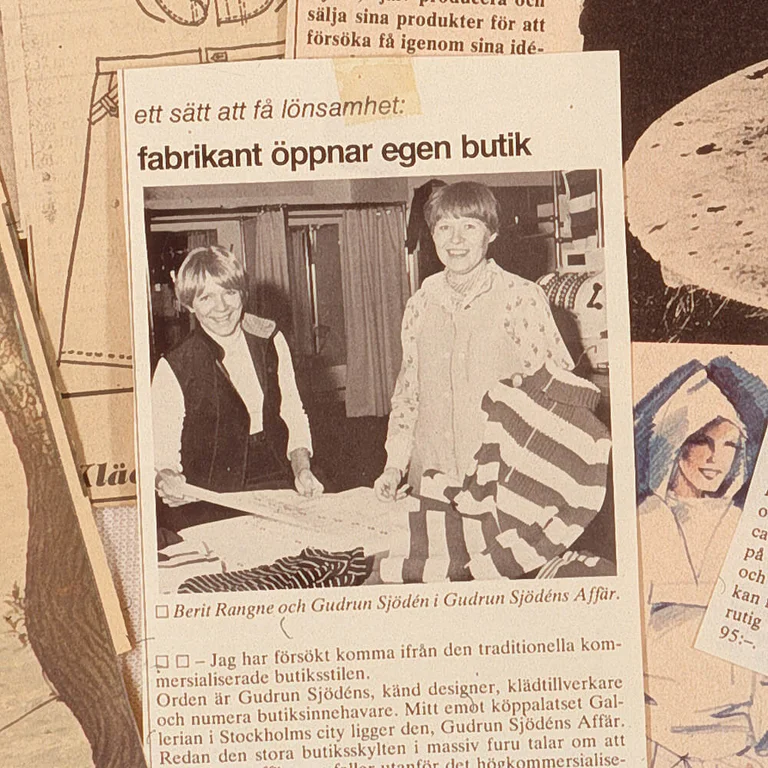
1976
The first store
Gudrun’s very first store opens its doors in Stockholm.
After two years of supplying clothes to shops and department stores throughout the Nordic region, Gudrun and her team decided to stop wholesale activity to external stores. And that same year, the company opened its first ever colorful store on Regeringsgatan, in downtown Stockholm. For Gudrun, this was the true beginning of Gudrun Sjödén AB. She finally had a place to present complete collections, and in the store, her creative vision could come into full bloom.
In one newspaper, which referred to her as a well-known designer and clothing manufacturer, Gudrun said that she had intentionally tried to avoid the “traditional, commercialized store style.” Instead, she had designed a store as unique and inspiring as her clothing.
Regeringsgatan 30 is still a Gudrun Sjödén store today. The shop underwent a transformation in 2012 and is now bigger and more beautiful than ever before. The new interior decor is infused with Nordic heritage and gives visitors the sense that they’ve stepped into another world.
An exciting new journey began with the store on Regeringsgatan. Gudrun Sjödén now has 22 concept stores in seven countries. Over the years, each location has become a little oasis of color, design and a personal touch.
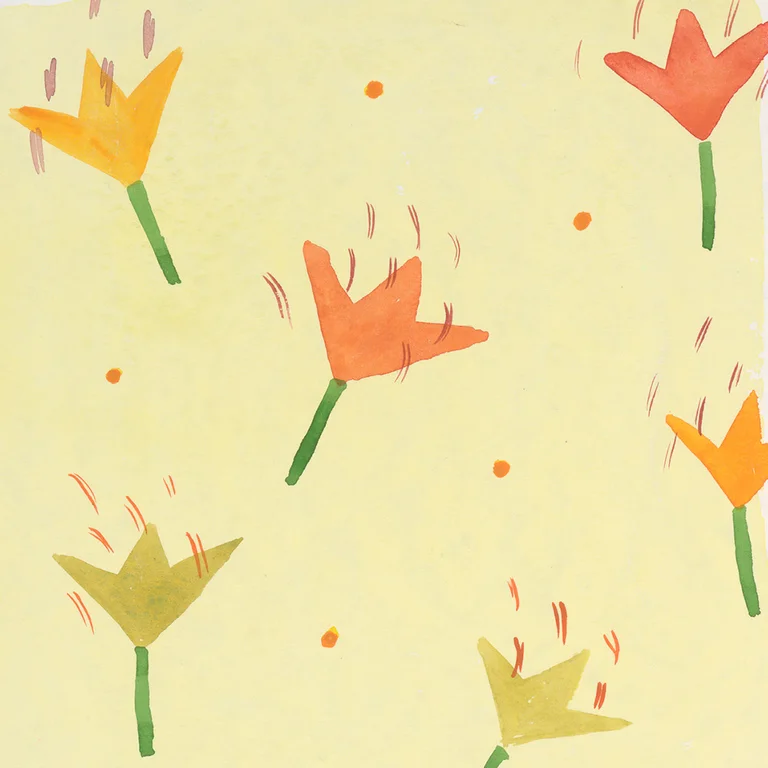
1978
Mail order sales take off
Gudrun’s colourful designs become more easily available to customers.
The Gudrun Sjödén brand has become synonymous with high quality and functionality with flair. 1978 marked the beginning of the company’s mail-order sales, an initiative that took off quickly and opened doors to customers throughout the country. Customers could easily order Gudrun’s unique and colorful designs without having to visit the shop in Stockholm.
By this point, the company had sales of SEK 2 million, an impressive figure amounting to over SEK 10 million in today’s value.
Mail-order sales introduced a new avenue for availability and became a key part of the business. It was also an opportunity for Gudrun to showcase her talent for connecting with customers on a personal and engaging level. And it paved the way for the company to open a webshop in 1997, as Gudrun Sjödén had already been shipping to customers for 20 years.
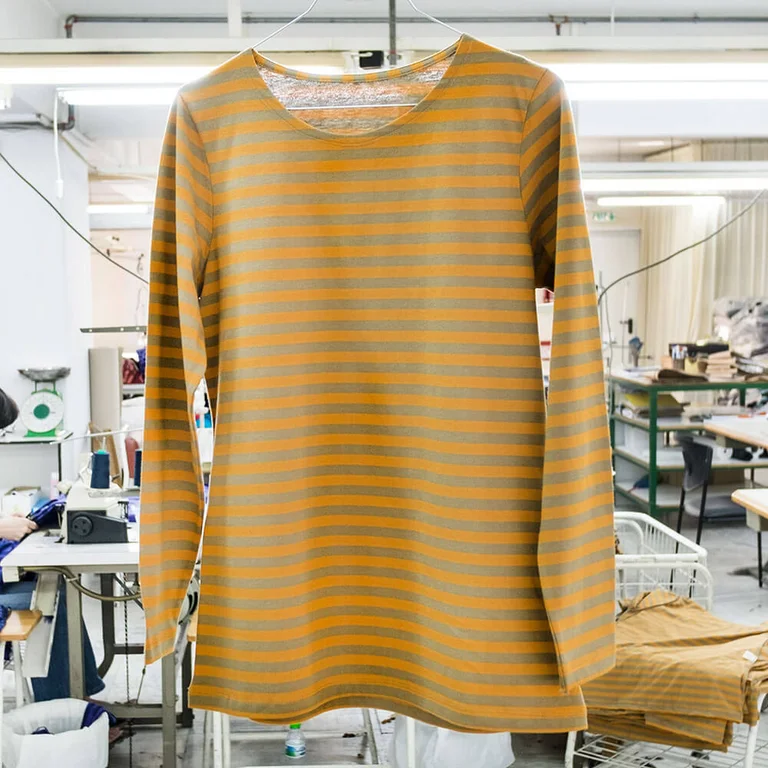
1979
Classic striped essential sweater
Straight stripes in soft cotton – the striped essential sweater is an ever-popular classic.
Thanks to their practicality and sturdy design, sailor shirts and henleys have long been favored by farmers, soldiers and workers. These timeless tops inspired Gudrun, and as blue-and-white striped French sailor shirts gained popularity, she was quick to feature stripes in her designs.
Gudrun introduced the classic essential striped sweater in 1978 and the garment has become a favorite of hers and of customers alike. The first essential striped sweater had long sleeves and centimeter-wide stripes. The classic design has evolved over the years, but has never lost its original charm. It has been modified with different fits and necklines, but the stripes are ever-present as a constant reminder of the classic roots of this garment.
The sweater has now been joined by the equally popular essential striped dress – a style that has become just as key to Gudrun’s collections. The essential striped sweater is a tribute to the past and to the future. Every stripe tells a story, every thread is woven with care, and the result warms the body and spirit alike.

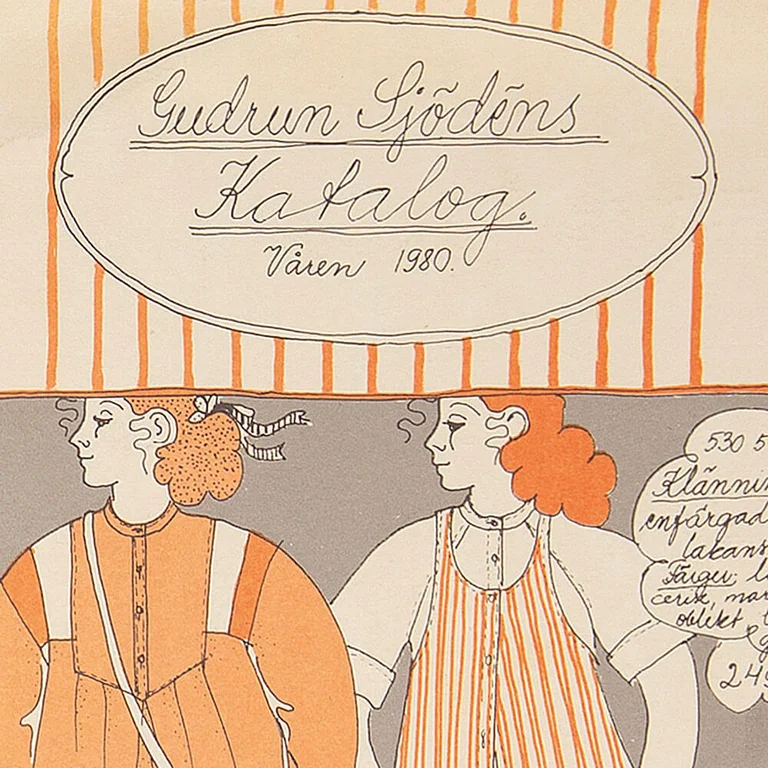
1980
First catalogue
From a simple two-page folder to a thick catalogue with colour photos for hours of browsing.
1980 marked the beginning of a shift in the mail order business, when Gudrun Sjödén introduced her popular catalogues that were quickly to become iconic. The first catalogue was a simple, folded, duplex-printed sheet of paper. The main colours, orange and grey-green, appeared in various tones. Gudrun designed the entire layout by hand. This gave the catalogues a unique and authentic look and feel.
Her customers were longing for more than just the products, they wanted a personal connection, a narrative, too. So Gudrun filled the pages with hand-written descriptions conveyed in a personal tone. The catalogues became more than simply a set of collections. Each one was a diary in which Gudrun shared her interests and wrote about whatever brings her joy. Her narratives gave customers more background about the clothes plus an insight into the person behind them – they continue to be a significant feature of the catalogues today.
Each one takes us on a journey of creative design and colour, filled with anecdotes and observations that offer readers a richer, more engaging experience. These catalogues have become collector’s items over the years, cherished by those who appreciate their artistic and personal value.
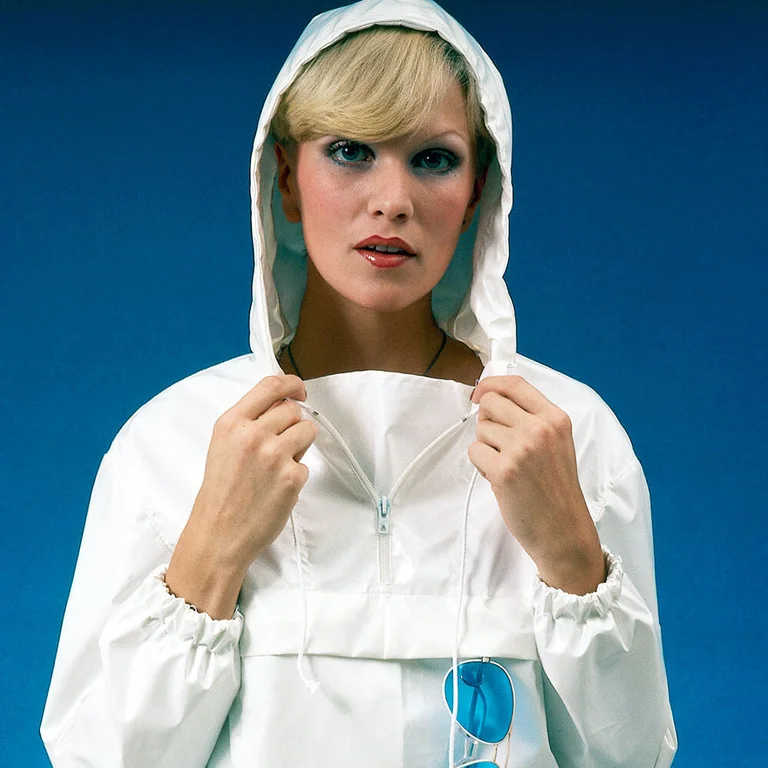
1980
First parka
The jacket that combines design and practicality – our popular parka.
When Gudrun Sjödén released her first collection in 1974, she was designing clothes for an active lifestyle. It was called “Active leisure in natural materials” and included a hooded sports jacket with a zip and practical pockets. A predecessor to today’s parka.
The first parka was introduced in 1980 and has been a firm classic Gudrun piece ever since. It makes a welcome return in a variety of colour combinations and new patterns, year after year, sometimes in both the spring and autumn collections. Its practical purpose and robust design have remained the same for four decades, keeping out the wind and rain. Ready for all kinds of adventures, whatever the weather.
Gudrun Sjödén has designed a variety of unique jackets for different seasons over the years... from longline to shorter styles, crafted from both warm and cooler fabrics. But our parka is a classic that we never grow tired of and it holds a special place in our hearts. Thanks to its ageless appeal and unbeatable practicality, it never goes out of fashion and is as much of a go-to piece today as it was in 1980.
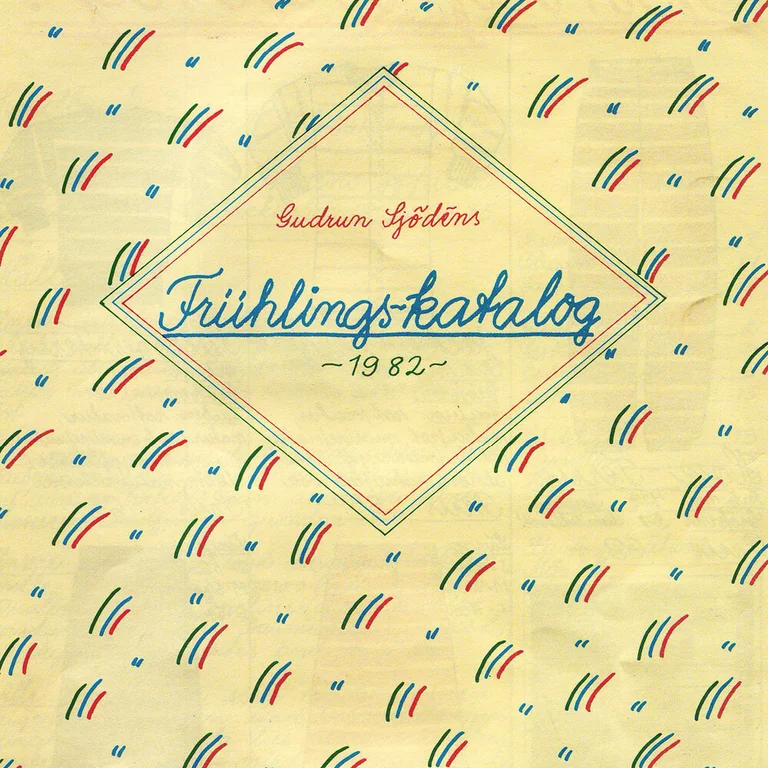
1981
Sales in Germany
The customer base was expanding outside of Sweden and the company began selling via mail order in Germany.
It had always been Gudrun’s aim, as both a designer and a businesswoman, to grow and expand her company’s activities in Sweden and further afield. Her visions and aspirations knew no bounds and 1981 proved to be a pivotal point in the company’s journey. Gudrun decided to launch her unique fashion style on the international stage and this marked the beginning of an exciting and expansive period. Germany was the first country, outside of Scandinavia, to get a taste of Gudrun Sjödén’s colourful and unique design style.
Gudrun began selling her products via mail order from the modest surroundings of her sister’s kitchen in Rosstal, a small picturesque market town in Bavaria. With a feel for what her German customers wanted and plenty of determination, Gudrun laid the foundation for what would eventually become a successful market. The quality-conscious Germans welcomed Gudrun Sjödén’s clothes with open arms, they appreciated the aesthetic and practical qualities of her designs.
The success on the German market was the start of the company’s global expansion. Gudrun Sjödén has sales in more than 50 countries today.
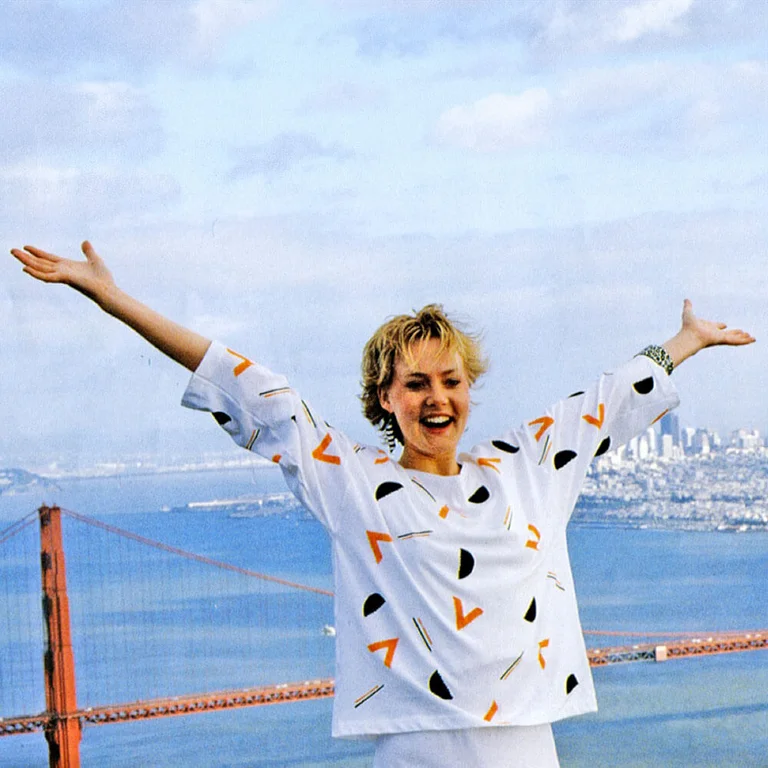
1983
Business in the USA
Mail order sales took off and two stores opened on the other side of the Atlantic.
The USA was the next country in which Gudrun Sjödén established a presence. In 1983, sales took firm root on the west coast in sunny California with the launch of a mail order business and two colourful stores. Unfortunately, the stores had to close in 1990. Photos taken in front of the iconic red Golden Gate Bridge in San Francisco capture those happy years in California.
Gudrun was given a warm welcome when she returned to the USA for a new attempt in 2012. Her essentials collection, with solid colour jersey pieces and harem trousers, was met with great sales success. The American customers embraced Gudrun’s boho and artistic style, which gave women greater confidence about their right to freedom of expression through their clothes.
It took courage to set up a new venture. But despite the previous setbacks, Gudrun Sjödén is now stronger than ever in the USA. The company has two stores there today. One in the bustling metropolis of New York and an outlet store in Minneapolis. Thanks to her ability to create clothes that touch the heart and soul, Gudrun has firmly established herself as a popular designer on both sides of the Atlantic.
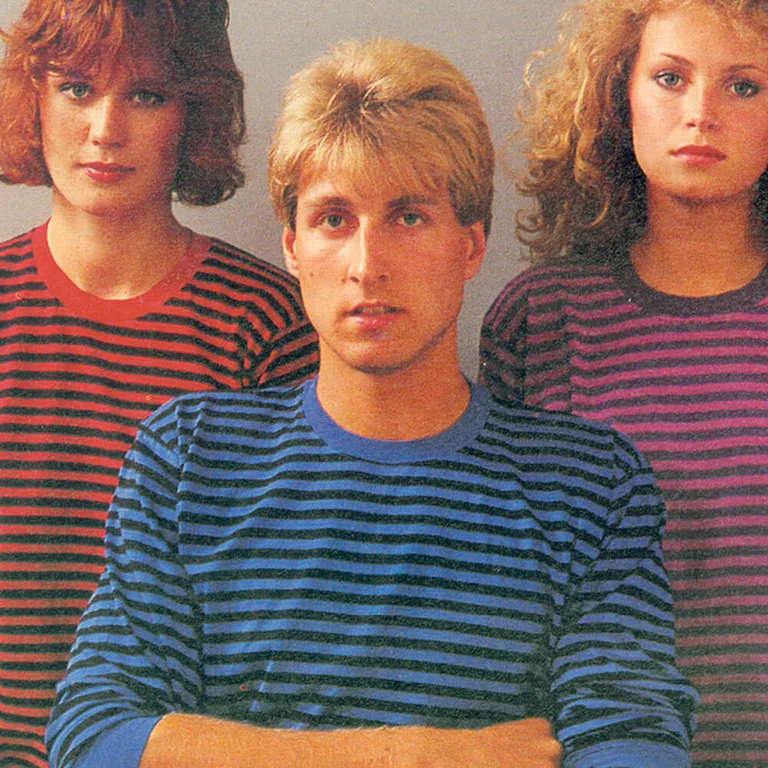
1984
Unisex
Colourful designs for women and men – the launch of unisex styles.
In the brand’s early years, a handful of garments were available in sizes for both women and men. Then in 1984, Gudrun Sjödén took the next step and introduced unisex clothing. The catalogue was a blaze of colour in true 80s fashion, with women and men posing in matching outfits.
The classic straight stripes from 1979 featured on the unisex tops, catching the eye with their inclusive and playful style. As well as this timeless design, the range included jackets, trousers and knitwear in a spectrum of colours and patterns.
Launched alongside these unisex styles was a line of clothes in unique Gudrun style aimed specifically at men.
Gudrun Sjödén branched out into creations for children too. The catalogues in the 80s included small, colourful pieces among the many styles for grown-ups. Children’s clothes were introduced into the stores to get a feel of the market before the first colourful collection for children was launched in 1992. At last the whole family could express their style in colourful attire and unique patterns, whatever their age and gender.
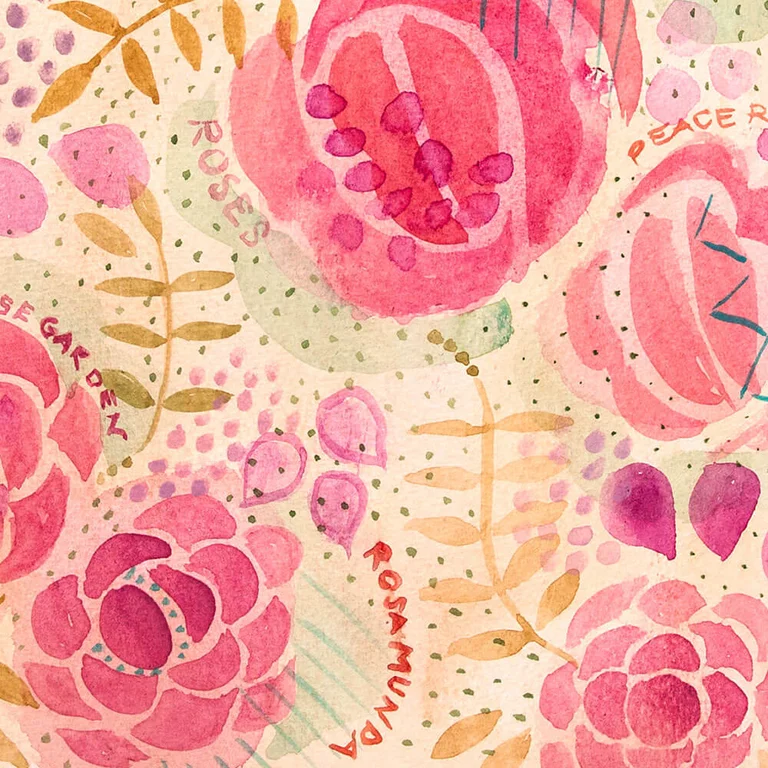
1988
Rosamunda
Passion for roses – part of Gudrun’s identity as a designer.
Large and small, printed and embroidered, appliquéd or knitted and in a host of different colours – no motif is as dear to Gudrun as the rose. Her very first rose design was named “Rosamunda”. That was in 1988 and it featured in a small collection of unbleached cotton underwear. It quickly became popular and was followed by roses in every colour of the palette wending their way across jacquard cardigans.
The rose has become an essential part of Gudrun’s identity as a designer and is a motif she loves to paint whenever the opportunity arises. Her passion for roses blossomed especially in the 90s and this enchanting flower appeared on both the clothes she designed and the front of catalogues. In the 2000s, her roses made an exciting tour of the world, inspired by different cultures: on embroidered jackets in China, colourful georgette pieces à la Frida Kahlo in Mexico, “folk style around the world” in Hungary and on beautiful wool in warm, rich colours in Bhutan.
This love of roses culminated in the 2010s in the biggest and most magnificent roses the brand has ever seen. Resplendent blooms in a blaze of brilliant colours, celebrating the flower that Gudrun never tires of redesigning in exciting, new ways.
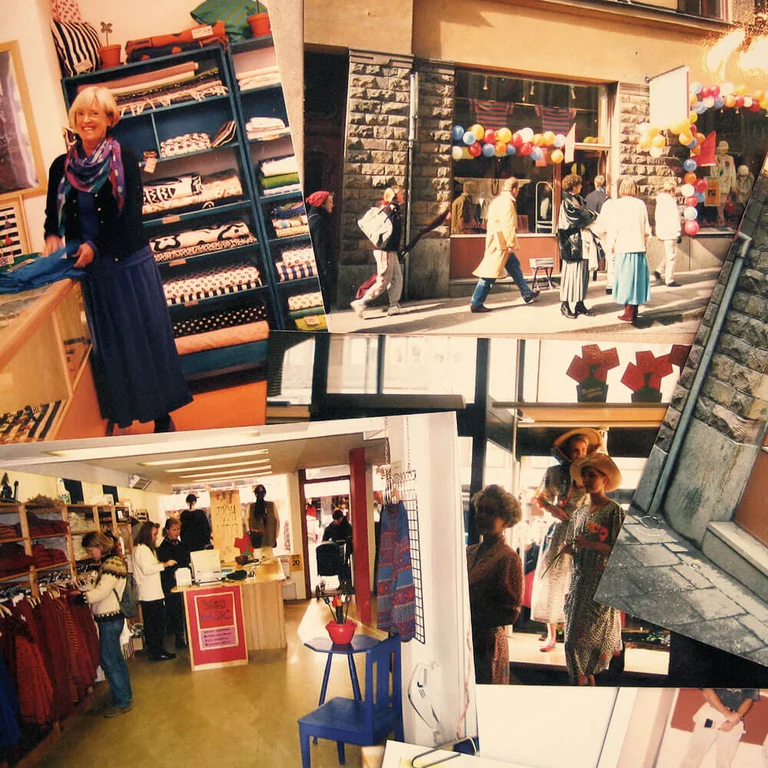
1989
Outlet store on Götgatan
Stockholm’s vibrant Södermalm district was chosen for the first outlet store.
The 80s was a decade filled with colourful creativity and dynamic designs, and in 1989 Gudrun opened her third brick-and-mortar store in Sweden. With two stores already enjoying thriving business, one on Regeringsgatan in the heart of Stockholm and one on charming Grönegatan in Lund, it was time to take the next step.
The brand’s first outlet store was opened on Götgatan, a popular shopping street in Stockholm’s Södermalm neighbourhood. Offering customers the chance to shop for Gudrun Sjödén’s characteristic designs at reduced prices. Today, the brand’s Swedish outlet store is located in Årstaberg and is a treasure trove of pieces from past collections as well as unique vintage bargains. An outlet store was opened in Minneapolis in the US earlier this year too.
Gudrun’s gem of a store on Götgatan never lost its charm and the beautiful rambling patterns on its tempera-painted walls continue to enchant everyone who enters. What started out as an outlet store became a Gudrun Sjödén store selling garments from the latest collections.


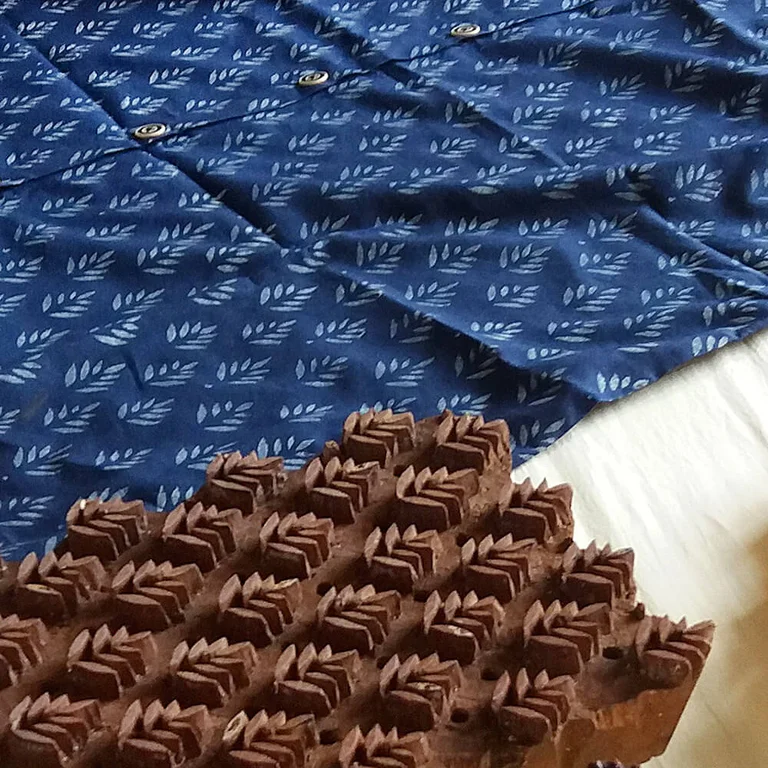
1990s
Block-print designs
Gudrun discovered her fondness for hand block printing back in the 1990s.
Block printing is a centuries-old craft, whose roots date back to 7th century Japan and Korea. It is a captivating art form with a rich heritage. Originally, the technique was used to embellish religious manuscripts. Over the centuries, it was employed more widely to decorate books and textiles.
Gudrun Sjödén started to incorporate block printing into her designs in the 1990s and the artisanal method has featured regularly in her creative work ever since. The steps involved are as fascinating as the finished products. It is a painstaking process requiring the skilled hands of experienced artisans. Blocks of wood are carved and chiselled individually by hand to produce the patterns. Each block is then dipped into a dye paste and pressed repeatedly on metre after metre of fabric, transforming it into a beautiful canvas of patterns, shapes and colours.
The beauty of block printing is that it results, inevitably, in slight irregularities. This means that every print has its own unique quality. Gudrun Sjödén blends this traditional technique with contemporary designs and artistry to create styles that possess a unique appeal.
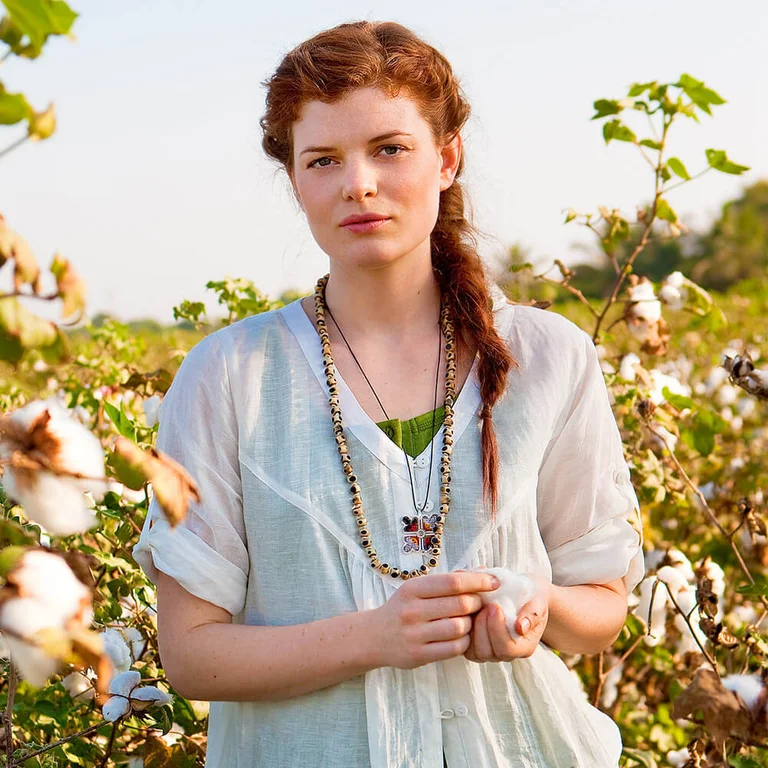
1992
Encounter with India
The first organic wave arrived and India presented itself as a new manufacturing country.
Safeguarding our planet has been rooted in Gudrun Sjödén’s business philosophy from the very beginning. Back in 1974, when her first collection was launched, Gudrun was already advocating the use of undyed cotton instead of conventional cotton which was usually bleached and then dyed.
In the early 1990s, Gudrun first set eyes on a field of cotton, stretching away to the horizon like a soft sea of white fluffiness. It was a time of growing public interest in sustainability and environmental issues and she knew that going organic, and especially organic cotton, was the right thing to do. She found her first supplier of organic cotton in Greece.
Shortly afterwards, Gudrun travelled to India to learn more about cotton farming and organic methods of production. Her first ever visit to India was a profound experience. With its kaleidoscope of colourful sights, this vast country was a fountain of fascinating learning and inspiration. In 1992, India became a fantastic new manufacturing country for the company. It was also the start of a life-long relationship with the country and the craftsmanship that exists there continues to inspire Gudrun to this day.
Nowadays, Gudrun Sjödén uses organic cotton extensively in the woven and knitted fabrics for its clothes, accessories and soft furnishings.
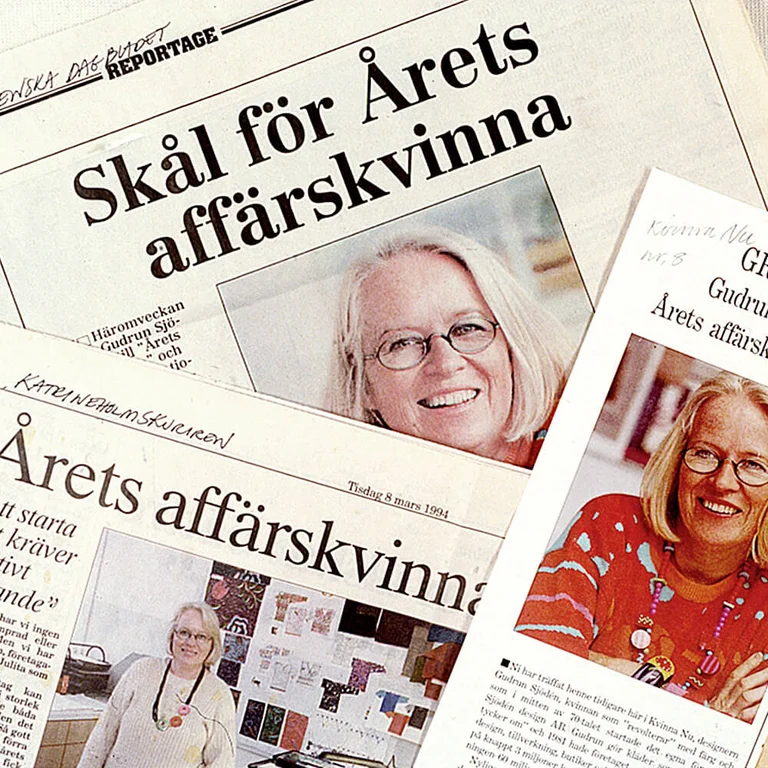
1993
Businesswoman of the Year
Gudrun Sjödén’s business thrived and flourished in the 90s and she was presented with an illustrious award.
The landscape of the 90s was dynamic and eclectic, defined by a diversity of genres, styles and influences that shaped the intersection of fashion, music and culture and combined then into a unique fusion. Overall, the 90s were a vibrant and transformative decade. Yet as Gudrun’s company approached its 20th anniversary, it stayed true to its creative spirit and continued to design and deliver Nordic design. This is Gudrun’s signature style, characterised by vivid colour, bold patterns and a fondness for functionality and nature itself.
1993 was an especially notable year for Gudrun Sjödén, as she was presented with Sweden’s Businesswoman of the Year Award. This prestigious award not only highlighted Gudrun’s position in the fashion world, it was also recognition of the success of her vision and business acumen. In addition, it was an acknowledgement of her hard work and dedication and a testament to how she had successfully built a company and created a brand that was not just about clothes, but about a lifestyle that embraces colour, joy and the natural world.
Although the 90s was an era marked by change, for Gudrun Sjödén it was a time of achievement and growth. With her sights fixed firmly on the future, Gudrun continued to evolve her world of colour and design.
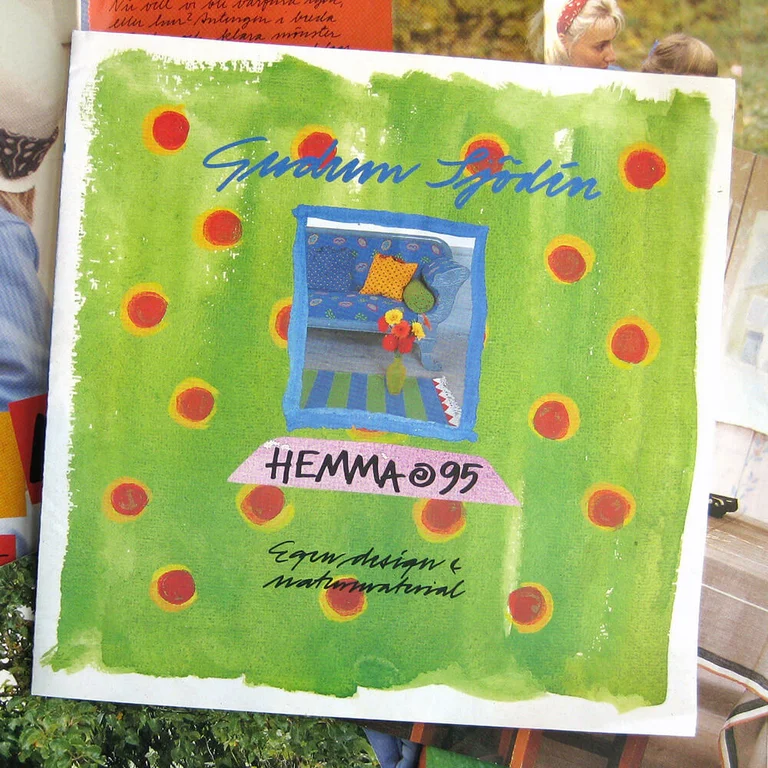
1993
First products for the home
Colourful soft furnishings were introduced to the portfolio.
Textiles became Gudrun’s way of expressing her creativity. Designing clothes gave her the opportunity to bring more colour and personality into everyday life. By now, Gudrun Sjödén’s creative designs had been worn by women, men and children. But something was missing. Gudrun had long thought that her colourful designs would look good on more than just clothes and accessories.
In 1993, the company introduced bed linen, pictures, postcards and writing pads to the range. Other home decor and soft furnishings were added over the years. Eventually, the range had grown to the extent that Gudrun Sjödén could launch it separately as the first Home collection. Exquisite textiles with classic designs in true Gudrun style, showcased in a catalogue of their own.
The homeware collection has been a constant component of Gudrun Sjödén’s range ever since. Her distinctive designs appear on clothes, soft furnishings and ceramic products today. Providing inspiration to inject colour into our homes and create a personalised and unique look.
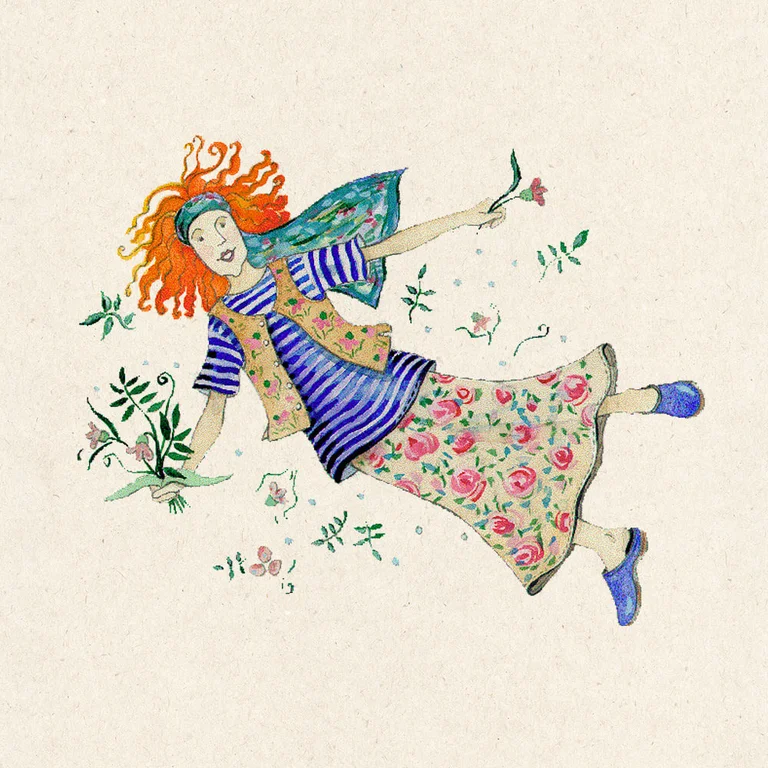
1997
Launch of the webshop
The advent of the digital age enabled Gudrun Sjödén to reach out to more fashion lovers.
Gudrun Sjödén began expanding on the international stage early on, back in the 1980s. Understanding how customers in different parts of the world think and behave has been pivotal to establishing and building a successful presence for the company in the global market. Customers in Germany have their own unique preferences which are different to those of customers in, for example, the States.
The progress of digitalisation enabled Gudrun Sjödén to extend its reach to even more customers. The company launched its webshop in 1997 in three languages – Swedish, English and German. Since then, its digital presence has grown to the extent that the website can now be read in nine different languages.
With more than 20 years of experience of selling clothes via mail order, the webshop entailed an upgrade in technology, while sending goods in parcels was already a deeply rooted habit.
The website was more than just a digital advancement. It provided Gudrun with a platform for telling customers about how she works, what inspires her and the ideas behind her designs. Anecdotes that were previously restricted by the amount of space available in the printed catalogues now had unlimited room to blossom and grow.

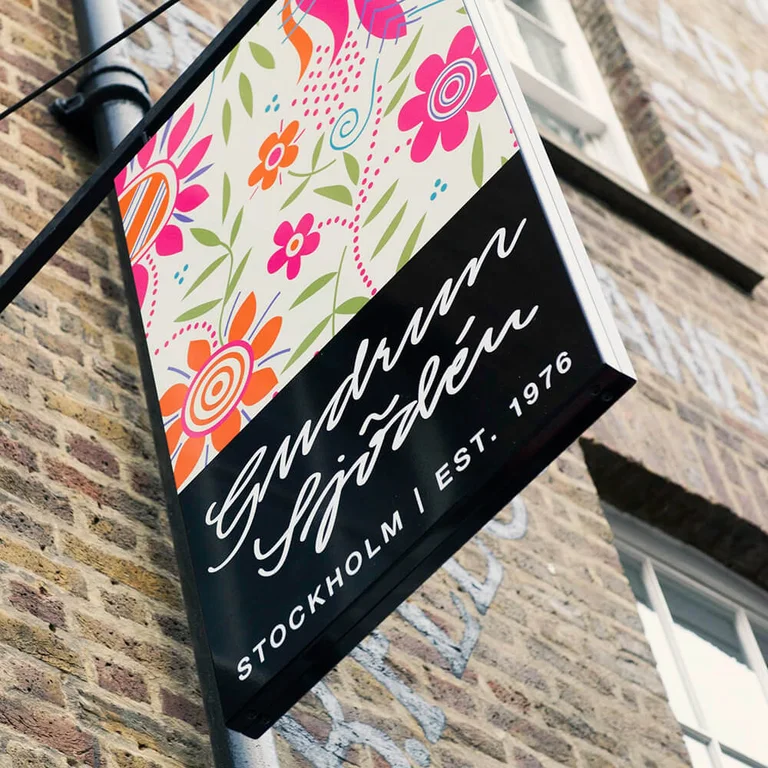
2000s
More stores open
Gudrun Sjödén launches six new stores.
In the 2000s, Gudrun Sjödén’s customers gained access to shopping for their colourful favourites through more channels than ever before. Gudrun must-haves were now available to buy not only from physical stores but also from the webshop and mail order service. The trend in online shopping that might have seen the demise of physical stores actually boosted the brand’s expansion. The new millennium heralded a new era, and the years that followed spelled new store openings.
Iconic Gudrun design was gaining popularity, as more customers appreciated not only the amazing design, but also the eco-friendly materials. And when the fan-base grew in one location, a new store would open. This decade saw the opening of six new stores that welcomed customers inside for an inspirational and immersive shopping experience. Malmö and Stockholm in Sweden gained new branches, as did other European cities the likes of Stuttgart.
Today, Gudrun Sjödén has 22 unique concept stores around the globe.
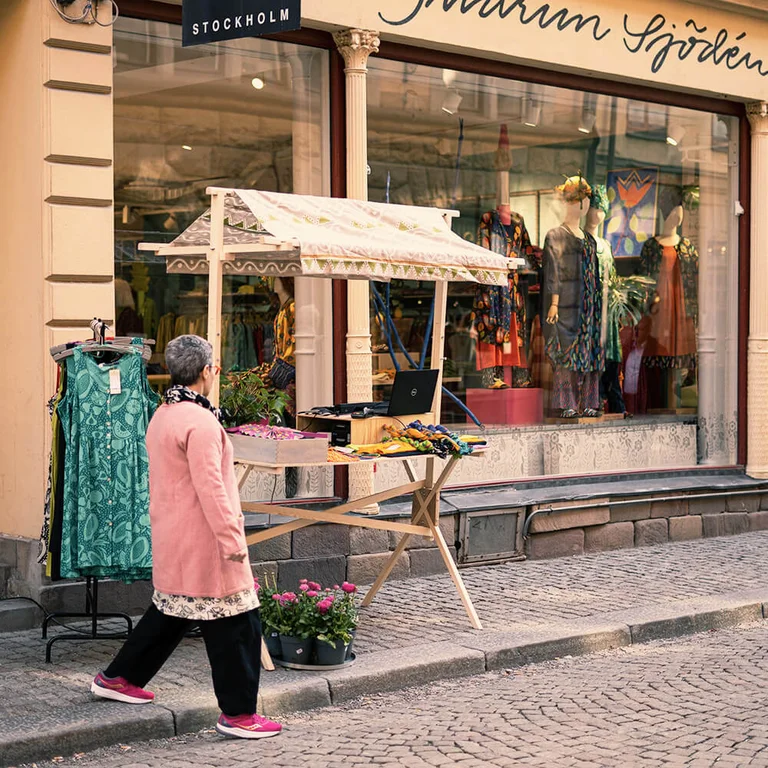
2003
Experiential store in Gamla stan, Stockholm
The Gudrun Sjödén brand launched its lines in Homeware and flowers.
In the midst of the boom in new store openings across Europe, yet another store opened in Stockholm. As the third store in a row in the Swedish capital, the latest offshoot was in the historic Gamla stan district. This unique store was located on Stora Nygatan, and offered not only the distinctive Gudrun Sjödén fashions, but also a select assortment of homeware and flowers. A place where customers could immerse themselves in colour and design.
In 2021 the winds of change transformed the premises into Gudrun’s experimental store and design studio. On the ground floor, customers could browse the season’s unique fashions, while the first floor housed Gudrun’s own design studio, dedicated to a creative free-flow of swatches, colour schemes, design concepts and future collections.
The Stora Nygatan store is still going strong, and is a thrilling boutique to visit for its unique creative ambience!
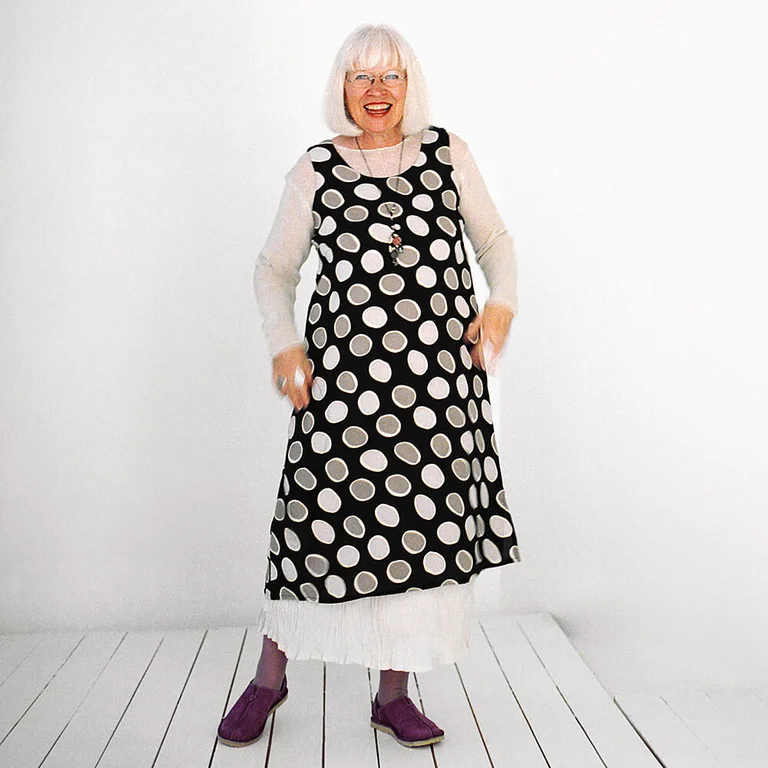
2004
Entrepreneur of the year
Gudrun Sjödén receives an accolade for her entrepreneurship.
Gudrun Sjödén has a long-held vision of advocacy for more colourful women around the globe. With her playful patterns, she aims to inspire women to be confident in wearing bright colours and expressing their personality, but also in realising their ideas and fulfilling their dreams. Gudrun aims to demonstrate that women can both be enterprising and successful, and can blaze a new trail in a world long dominated by men.
In 2004, Gudrun Sjödén’s hard work and dedication were recognised when she was named Entrepreneur of the year This was proof of Gudrun’s ability to build a brand and manage a business with creativity and passion. In an interview, Gudrun expressed her hope that as a businesswoman she might serve as a role model for like-minded women.
Gudrun describes herself as a water colour artist and entrepreneur, and her achievements are a reminder that everyone, regardless of gender, can create something unique and meaningful.
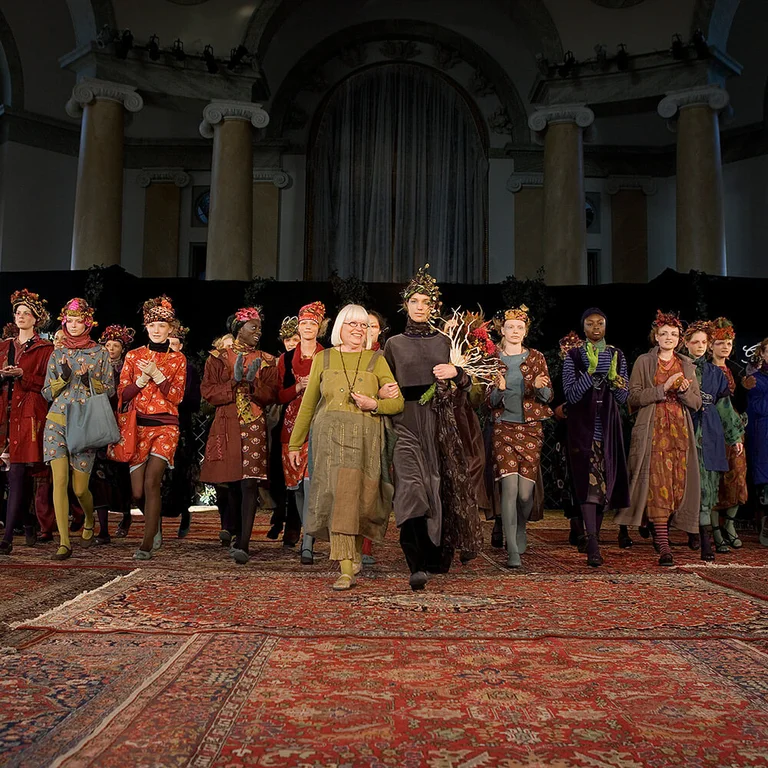
2005
Fashion show in Skeppsholmen Church
- Gudrun hosted a spectacular show in this beautiful, dome-shaped building.
One lovely spring day in 2005, Skeppsholmen Church – a historic former church in Stockholm – was transformed into a dazzling stage where Gudrun Sjödén presented an autumn fashion show. Within this magnificent dome-shaped building, fashion-lovers gathered to get an early taste of the upcoming collection that blended folkloric styles in wool with knit and velvet florals. The collection paid tribute to traditional craftsmanship and the younger fashion market.
The show began on a sophisticated note, with quiet colours and stylish designs. Jackets, wide-leg trousers and maxi dresses were paired with functional pieces for daily wear, like a roomy parka. The audience was drawn in by a visual celebration of pattern and colour. In a harmonious palette of coral, lime and misty blue, patterns of meandering leaves and blossoming florals danced across the soft materials that formed the common thread of this collection.
But what would a Gudrun Sjödén show be without an absolute abundance of colour? The show also incorporated a medley of colours and shapes – patterns of medallions and intricate embroidery filled the delightfully autumnal stage.
It was a wonderful show that offered a taste of what was to come in autumn 2005. For one day, the calm atmosphere within this former church was transformed into a vibrant stage upon which Gudrun Sjödén’s art was brought to life.
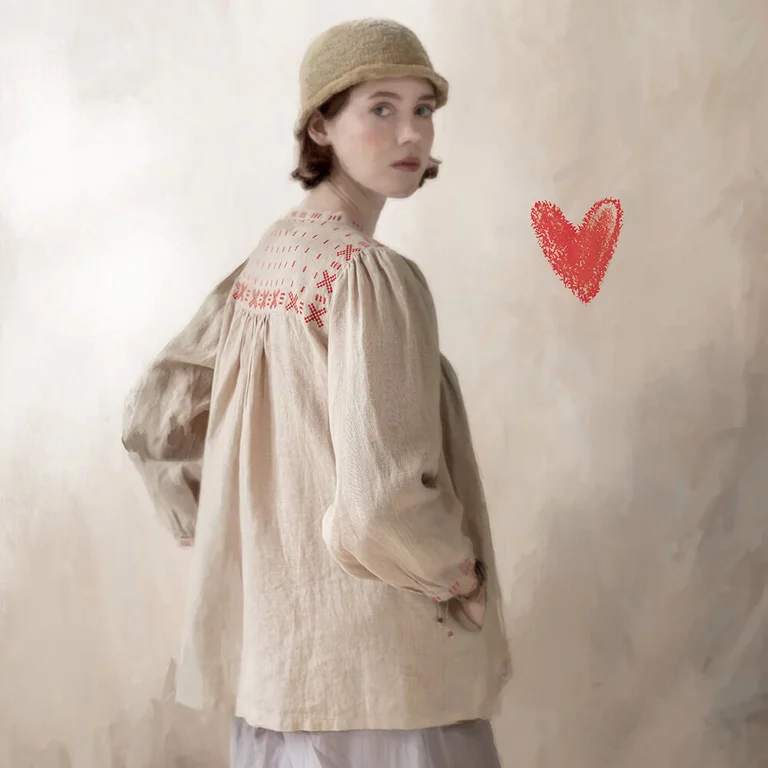
2006
Gudrun’s Good Deed
- An initiative that links design with hope for a better world.
Gudrun’s Good Deed is an initiative in which each year, a portion of proceeds from selected products is donated to a special organisation or project that is close to Gudrun Sjödén’s heart. The intention behind this donation is to help improve the circumstances for people around the world – quite simply: it is a good deed.
The project began in 2006 and every year since then, Gudrun has chosen a specific product from which a fixed amount or a percentage of sales is donated in full to the designated cause. The products have varied from one year to the next and have included dresses, cardigans, bags and berets.
The organisations and projects supported by Gudrun Sjödén have also changed from year to year, reflecting the broad scope of Gudrun’s Good Deed. One year, the donation went to preserving old handicraft traditions and strengthening women around the world. Another, it went to students and teachers in India. In previous years, the initiative has also contributed to preserving Sweden’s cultural heritage through donations to various museums and scholarships for emerging artists.
Gudrun’s Good Deed has made it possible for customers to be a part of something bigger. The products they have purchased have not only brought them joy – they have also contributed to something good for someone else.
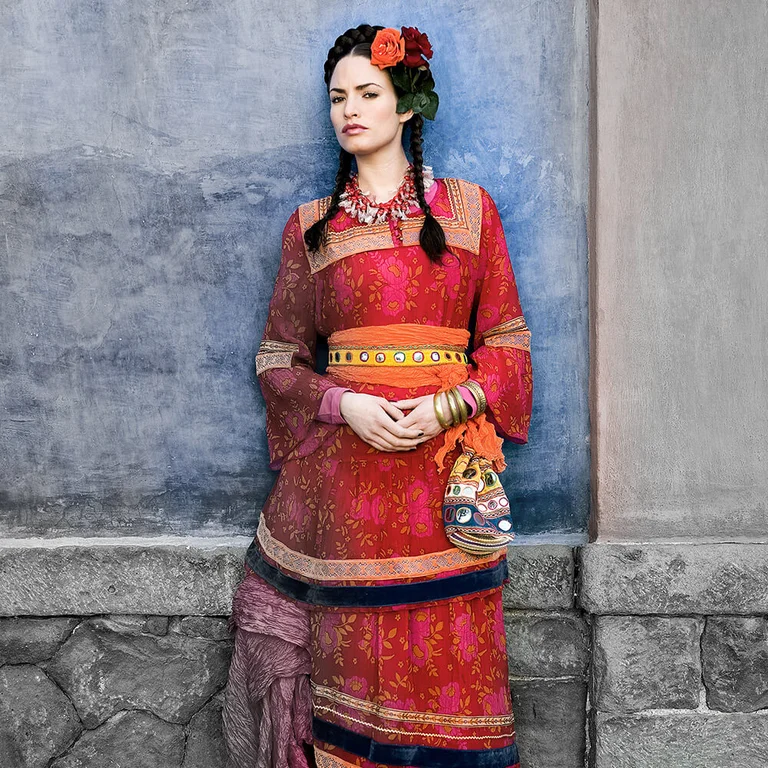
2006
A tribute to Frida Kahlo
- The art of Frida Kahlo inspires Gudrun Sjödén’s flourishing designs.
Mexican artist Frida Kahlo has long been a source of inspiration for Gudrun Sjödén. Kahlo’s artistry spanned far beyond her famous self-portraits and touched upon matters such as politics, identity and feminism. Flowers and nature were frequently present in her work – elements that have also become an important part of Gudrun’s designs.
Gudrun has revisited her floral patterns since the 80s, and when she thinks of Frida Kahlo, she paints big, bountiful roses. The romantic rose is a feeling and a decorative symbol for Gudrun – not merely a simple flower.
In 2006, Gudrun Sjödén released an entire collection dedicated to the iconic artist, which was photographed in Kahlo’s home country of Mexico. Filled with colour and large roses on georgette fabric, the tribute was highly popular among customers and the collection became a bestseller.
Frida Kahlo remains a source of inspiration for Gudrun, who continues to occasionally present interpretations of the artist in her designs.
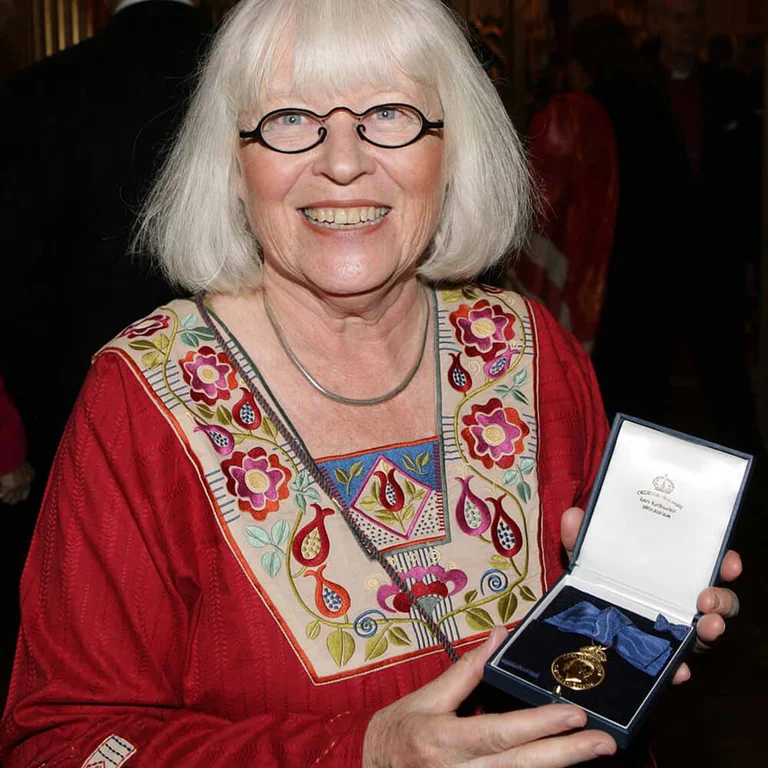
2007
His Majesty the King’s Medal
- Gudrun Sjödén was honoured with a medal for her unique contributions in fashion.
Each year, the king of Sweden presents medals to individuals whose work and dedication have resulted in significant contributions to society; medals are also presented in memory of important events and people. They are given in several different categories, depending on the person and reason for the award.
His Majesty the King’s medal is one of the most historic among them – it has been presented for over 200 years and comes in different sizes. It was originally presented to long-serving individuals in the royal court, but since the mid-70s it has also been awarded to people outside of the royal circle.
In 2007, Gudrun Sjödén received His Majesty the King’s Medal for her work as a fashion designer. She was awarded the medal in the eighth size, and it is decorated with a blue ribbon. Gudrun has long had an interest in women of history, and in royal women in particular. To the ceremony, she wore a red dress with a yoke embroidered with flowers – a design of her own making, named after Queen Kristina, a woman who symbolises strength and independence.
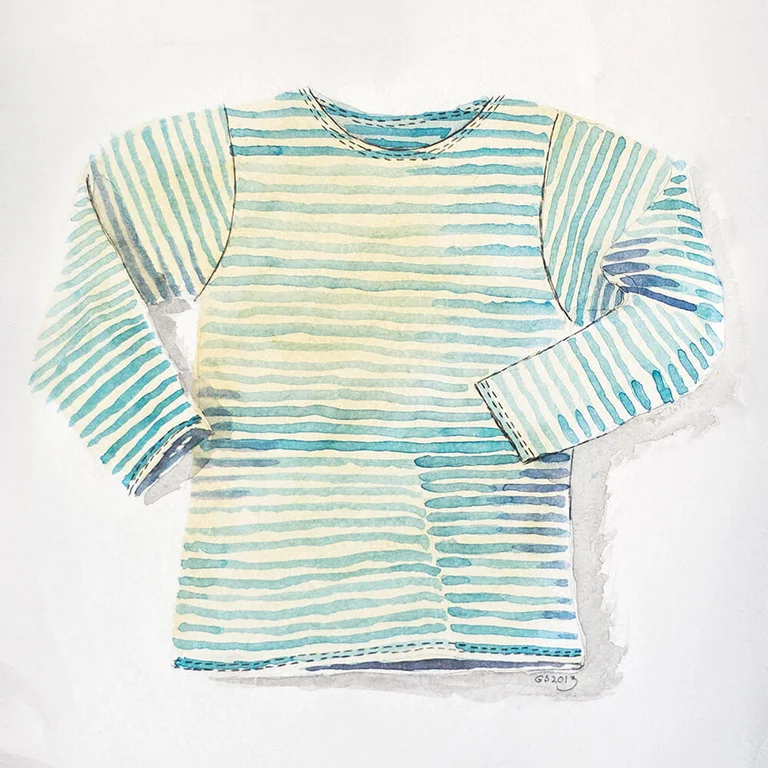
2009
The essential stripe sweater celebrates 30 years
- It’s a pattern that never goes out of style – our essential stripes have been with us for three decades.
In 1979, Gudrun Sjödén introduced a piece that would become one of the brand’s most popular – the essential stripe sweater: a soft, long-sleeved cotton sweater with stripes in fun colour combinations. The simple, yet playful design gave the sweater a look that was simultaneously modern and timeless. This true Gudrun classic reappears in the collections, season after season.
Over the years, the essential stripe sweater has been joined by other striped styles. Some have come and gone, while others remain as beloved essential pieces. The essential stripe dress is one such example of a style that secured its place in a colourful Gudrun wardrobe.
In 2009, we celebrated the 30th anniversary of this sweater: three decades of striped adventures. In a fashion world that is so often guided by trends, Gudrun’s guiding principle has always been to create clothing that lasts – both when it comes to style and quality. The essential stripe sweater is a perfect example. Thanks to its timeless design, it has stayed with us for all these years!

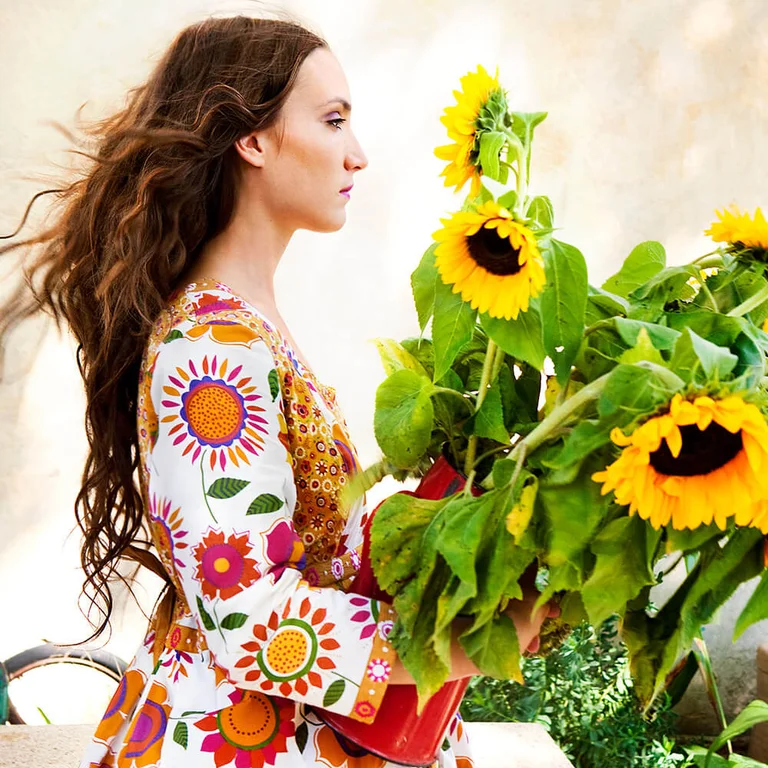
2010
Sunflowers that do good
The flower that has become a symbol of hope and solidarity.
Botanical motifs, twining foliage and fabulous flowers from dainty buds to bold blooms have long been staple elements of Gudrun Sjödén’s unique design work. Her rose motifs, which made their debut in the 80s, enjoy lasting popularity and appeal and are a symbol of Gudrun’s design style. Two other flowers, beside the much-loved rose, hold a special place in the heart of the brand. One of them is the sunflower.
Its cheerful golden blooms have been filling collections with vibrant warmth since 2010. Gudrun feels that the distinct appearance of the sunflower, with intensive yellow petals radiating from a central disc, makes it a perfect motif for clothes and soft furnishings. She tells us how watercolour naturally creates rounded forms that give life and movement to the flower on the surface of the fabric.
In 2022, the sunflower took on a deeper symbolic meaning when Gudrun Sjödén decided to show her support for the people of war-torn Ukraine. Two collections were created, with clothes and homeware lavishly adorned with sunflowers. All the proceeds from the sale of each sunflower product have been, and still are, donated to the UNHCR, the UN Refugee Agency.
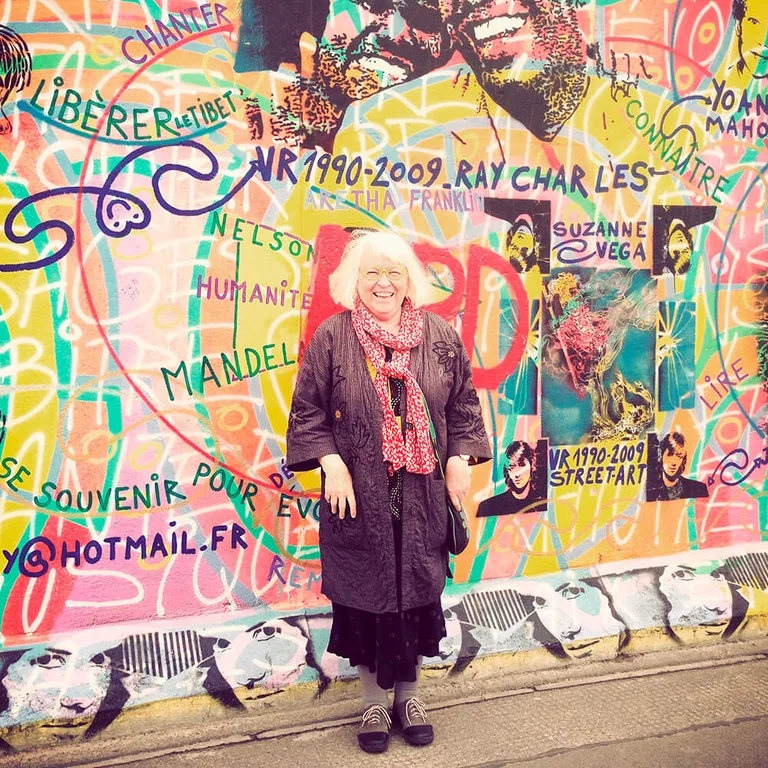
2010
Kulturtanten Facebook page
Gudrun Sjödén launches her first Facebook page.
Gudrun Sjödén has always had a strong bond with her customers and coined the phrase “what we ladies want” in the early stages of developing her business. The name “Kulturtanten” (Culture Lady) is not just a descriptive title that Gudrun has chosen to call herself. It is a badge of merit, an expression of her personal identity and an understanding of what her customers are looking for.
In 2010, spurred by her inquisitive mind and entrepreneurial acumen, Gudrun took the step of creating a social media presence. She launched her first Facebook page that she fittingly called Kulturtanten. Just as she had been doing in her catalogues and on the website, Gudrun posted personal and relevant content there. It was a space for sharing fanciful ideas and beautiful pictures with her followers and where she could engage in genuine dialogue with her customers. The purpose was to give customers the experience of communicating with a real person and not just a company.
Within one year, the Kulturtanten Facebook page had over 11,000 followers and the figure now is more than 18,000. Gudrun regularly updates the page with new content.
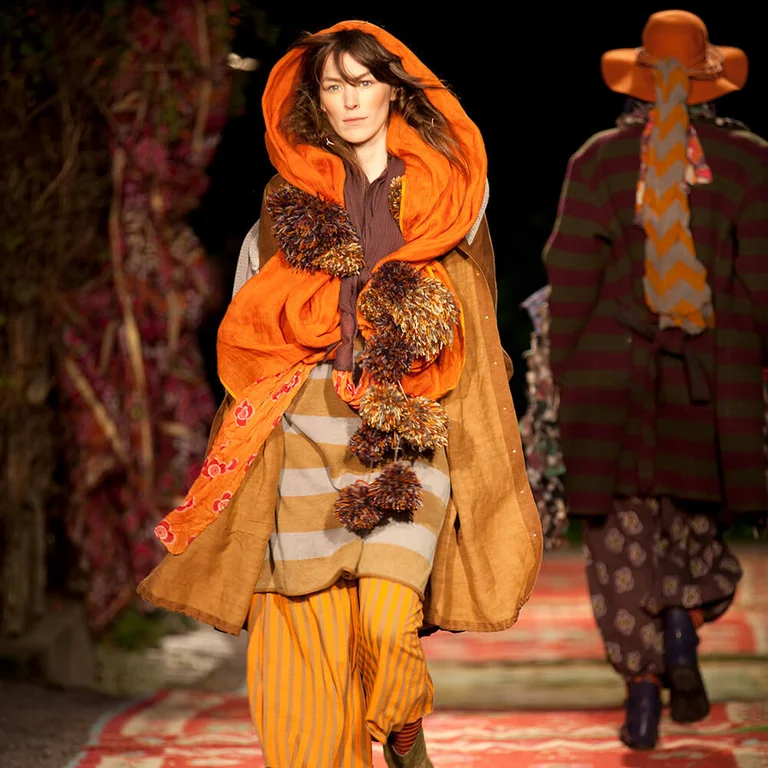
2011
Anniversary show
A colourful anniversary with a fashion show in botanical surroundings.
Rosendal’s Garden is a lush botanical paradise that has been a constant source of inspiration for Gudrun Sjödén over the years. A green space for creative collaboration and backdrops for photoshoots. Bursting with life and colour, the botanical setting reflects, in many ways, the brand’s own love of nature and its incredible beauty.
Rosendal’s Garden was the natural choice of venue for celebrating the 35th anniversary of Gudrun Sjödén’s first store on Regeringsgatan in Stockholm in 2011. Guests were treated to a colourful and spectacular fashion show to mark the anniversary occasion. It was a tribute to Gudrun’s design work and a retrospective collection that captured the essence of the past 35 years.
The event was attended by about 400 people who, as well as enjoying the fashion show, were given an insight into how Gudrun’s vision has evolved over the years. It was an unforgettable evening buzzing with joy, creativity and nostalgia.

2011
Shanghai Fashion Week
Gudrun’s dazzling designs take the stage at Shanghai’s fashion week.
The Gudrun Sjödén brand continued celebrating the 35th anniversary of its first store throughout 2011 and, after the hugely successful and colourful anniversary show at Rosendal’s Garden, it stepped onto the international stage with a show at the Shanghai Fashion Week. The 700 guests who were invited to the event were treated to a showcase of Gudrun Sjödén’s autumn and spring collections. A spectacular display of colours and designs in true Gudrun style.
The show was orchestrated by Robert Rydberg, one of Sweden’s leading fashion stylists, who has put his mark on a number of Gudrun’s fashion events. The models on the Shanghai catwalk were dressed in a palette of dazzling colours with unique designs and playful accessories. Jewellery, scarves and headwear were decorated intriguingly with vegetables. The combination of Gudrun’s eternal designs and Robert’s creative and imaginative styling delivered an unforgettable experience that placed Gudrun Sjödén on the Asian map.

2012
London store opens
A colourful Gudrun store opens in the pulsating heart of London.
Sweden, Germany and Denmark are some of the countries where Gudrun Sjödén stores have been established and they offer more than just shopping. Customers are able to try on clothes, find new favourite pieces and feel inspired by the blend of creativity and fashion that infuses the atmosphere of the stores and creates a unique experience.
When Gudrun Sjödén opened in London in 2012, a new address was added to the list of colourful stores. Covent Garden, where customers were greeted by an oasis inspired by 18th century Swedish style and where Nordic light and sumptuous, charming décor met in a British tea party. Gudrun Sjödén’s stores are more than just fashion and clothes, they offer customers an engaging and all-round experience filled with colour and character.

2012
Sustainability award at the ELLE Gala
Gudrun’s commitment to sustainability is recognised with the H&M Award.
The H&M Award for sustainability is an initiative backed by H&M and ELLE fashion magazine to encourage and reward fashion companies that work actively with sustainability issues. All aspects of the process are taken into account by the judging panel in its assessment – from design through production to logistics and customer communications. As well as strategies and long-term visions. The award was first introduced in 2007 and has been presented annually since then at the prestigious ELLE Gala in Sweden.
Gudrun Sjödén received the H&M Award for sustainability in 2012 at the ELLE Gala at the Grand Hôtel. The panel of judges praised her long-term commitment to sustainability and her tremendous passion in driving progress in her area. It also said that Gudrun’s timeless and personal style, her collections made of sustainable materials and her inspirational communications made her an obvious winner.

2012
Summer guest on P1 radio
Gudrun Sjödén is a guest on the Swedish radio programme, talking about her life and company.
Every summer since 1959, Radio P1 has aired its very popular programme which asks each guest to share personal thoughts and choose pieces of music. The programmes are led by a summer host who engages guests in light conversation. Originally, the same people appeared on the programme year after year. Today, a wider group of guests have the chance to talk about whatever topics they choose.
Gudrun Sjödén had the honour of being a guest on the hour-long programme in 2012. She shared major and minor experiences of life with listeners. Telling them about her cancer diagnosis, her Sami roots and how she grew up in the countryside. Gudrun also spoke about how and why she began her clothing company, her thoughts on female entrepreneurship and the many places she has visited around the world.
Gudrun Sjödén’s summer programme was a colourful and personal journey through her life and career, both accomplishments and setbacks. It gave listeners an insight into the passion and drive that fuel her work.

2013
Store in the Big Apple
Gudrun Sjödén returns to the USA and opens a colourful store in New York.
In the 1980s, Gudrun Sjödén’s customer base was expanding in the USA and the brand set up two stores and began selling via mail order there. The business encountered setbacks as a result of the Gulf War, however, and took the decision to close its operations in the US. Despite the challenges, Gudrun learned from the experience and decided that thereafter the company would only use its own capital for investments.
The relationship with American customers remained strong, however, and Gudrun Sjödén returned to the USA in 2012. This time, the company opened a store on Greene Street in the heart of SoHo, New York. A district with a flourishing culture and a calm, upbeat atmosphere. The perfect place for a colourful Gudrun store. Hand-painted furniture and a beautiful ornate floor give the store a creative ambience and make it an oasis of colour and design in the city’s cultural epicentre.
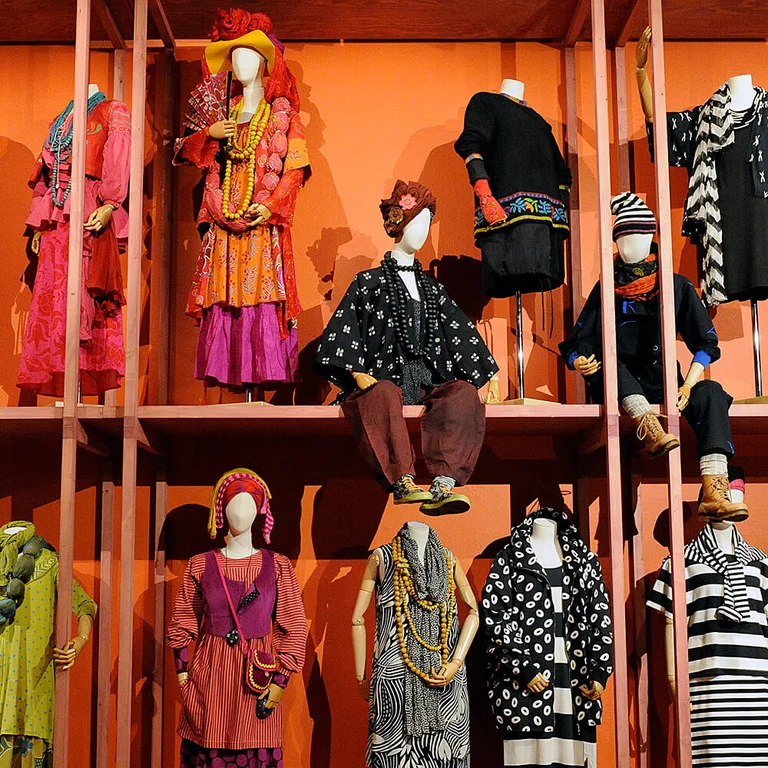
2014
Anniversary exhibition
A retrospective exhibition celebrating 40 years of inspiration and joyful designs.
In 2014, Gudrun Sjödén celebrated 40 years of creative design and colourful inspiration. The anniversary was celebrated at the cultural heritage museum Kulturen in Lund, with an exhibition inviting visitors to step inside the four decades of Gudrun’s unique world. The “Gudrun Sjödén – 40 year’s of inspiration” exhibition was a colourful journey through the beauty of nature, Nordic culture and global influences that have inspired Gudrun’s designs over the years.
In addition to the 40 different combinations of clothes from past collections on display, the exhibition offered visitors a unique insight into entrepreneurship, environmental awareness and thoughts on how clothes and identity are closely tied together. One of the aims was to stimulate debate about the role of fashion in the lives of middle-aged women and encourage them to dress as they want without conforming to societal norms or expectations. The exhibition was open for almost one year and was a resounding success that attracted numerous visitors.

2014
Gudrun’s wild tour
Gudrun Sjödén’s pop-up store brought a splash of colour wherever it went.
For many customers in Sweden, it’s too far to travel to visit a Gudrun Sjödén store. So in the late summer of 2014, some staff set off on a colourful tour with a trailer packed full of Gudrun’s unique creations. They travelled the length and breadth of the country for a month, setting up “Gudrun’s wild tour” pop-up store in six towns.
The first stop was Haparanda, followed by Umeå, Linköping, Uppsala and Jönköping, before the final stop in Lund in the south. The pop-up store gave customers the chance to see the products first hand and browse jersey tops with charming hens, soft cardigans with whimsical tigers and dresses with dancing tulips.
From the north of Sweden down to the south. The pop-up store offered customers a unique, interactive shopping experience and was greeted with enthusiasm at every stop on this colourful tour.

2015
Visit from the author Marian Keyes
Gudrun Sjödén’s first store opened four decades ago.
One early Friday morning in 2015, there was a buzz of anticipation in the air at the Regeringsgatan store in Stockholm. Gudrun Sjödén was hosting an author event and had invited Marian Keyes to give a talk to some 100 enthusiastic women who were gathered there to enjoy breakfast and listen to the Irish author telling them about her love of Sweden and sharing her thoughts on writing. The audience also had the opportunity to ask questions and get their copies of her book signed.
Marian Keyes, who is known for her bright prints and bold colours, was wearing a characteristic Gudrun Sjödén dress in honour of the day. When she met Gudrun herself, she burst out with the exclamation: “Oh my God, I’m so starstruck! It’s like meeting the Queen, only better”.
It was a magical morning with the worlds of fashion and literature coming together, filling the store with a cheerful, friendly atmosphere and creative exchanges.

2016
40th anniversary
The store on Regeringsgatan celebrates its 40th anniversary and has been an oasis of inspiration since 1976.
Gudrun Sjödén’s first store opened its doors in 1976, a mere two years after the launch of the brand. The vision was to create a setting that would be as inspiring and brilliantly colourful as the clothes themselves. Today, almost five decades after it first opened, the store is still in the same location on Regeringsgatan in Stockholm.
Its 40th anniversary was proudly celebrated in 2016 with 40 days of fantastic festivities filled with exciting surprises. The “Gudrun Sjödén celebrates 40 years of colour and design” anniversary exhibition was launched with a dazzling fashion show which featured new winter creations and unique winter pieces from past collections.
It was an unforgettable evening attended by guests dressed in vibrant, colourful outfits in true Gudrun style. After the opening event, the anniversary exhibition went on display at Stockholm’s arts and culture centre, where visitors were able to take a closer look at iconic garments that have shaped the brand over the years.
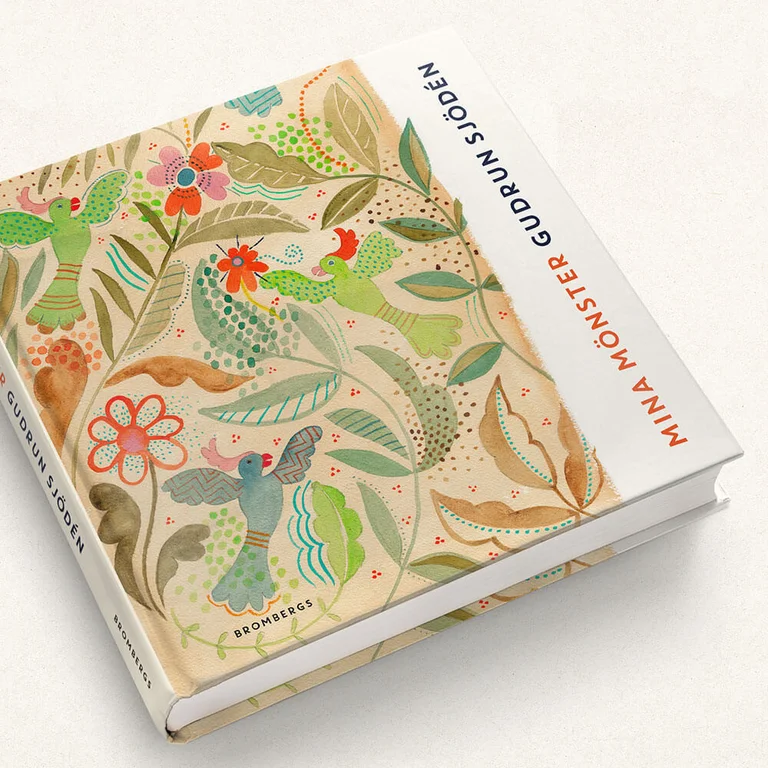
2016
My Portfolio
Gudrun’s colourful book “My Portfolio” is published.
Gudrun Sjödén is known for creating clothing for women who are not afraid to stand out from the crowd. Her characteristic designs and iconic patterns have been inspiring women around the world for 50 years. Although her design creativity has evolved over time, many of Gudrun’s signature designs have remained constant throughout. Stripes and dots, roses and tulips, and whimsical chirping birds... quintessential elements that feature in many of her collections.
In 2016, Gudrun Sjödén published her book “My Portfolio” in which she opens the door to her creative world and shares her sources of inspiration and the journey that has shaped her life and work. It is beautifully illustrated with Gudrun’s colourful watercolours and photographs taken over the years – both published and unpublished.
My Portfolio is more than just a book about clothes, it is a piece of Swedish design and textile history.
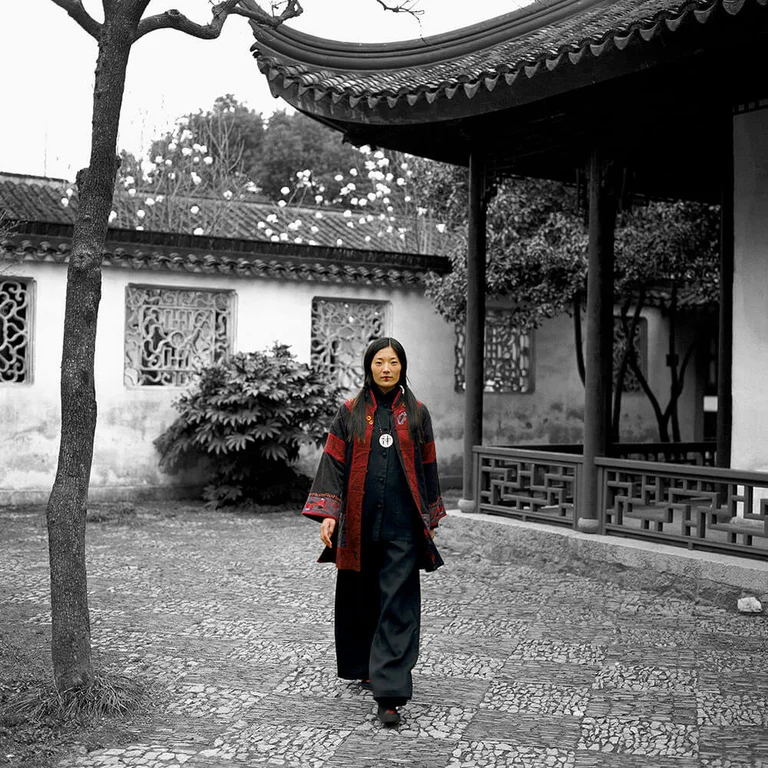
2017
Exploring Japan’s craft heritage
A journey of discovery filled with textile artisanry, inspiration and creative expression.
Gudrun Sjödén’s first encounter with Japan was back in 1970. She embarked on a long and exciting journey to Tokyo and a country with a rich and ancient history of traditional arts and crafts. There she was inspired by the women who were beautifully dressed in kimonos crafted from colourfully floral or finely patterned fabrics. It was here that Gudrun’s love of the Japanese design style was ignited in her creative spirit.
In 2017, 47 years later, Gudrun revisited Japan – this time with a group of textile enthusiasts via a Swedish handicrafts travel organisation. It was a chance for them to delve into the country’s rich textile culture and skilful craftsmanship. During their visit, they learned about the meticulous techniques and attention to detail behind traditional textile and other crafts in Japan. They worked with yarns, sewed traditional dolls, folded origami figures and gained an insight into the art of indigo dyeing.
The trip was filled with inspiration from Japanese designs with flat flowers, twining vines and stylised leaf shapes. Gudrun was able to find new expressions not only in the traditional arts and crafts, but also in the tasteful Japanese design style, where combinations of colours and patterns and different kinds of clothing are matched harmoniously to create a beautifully cohesive whole.
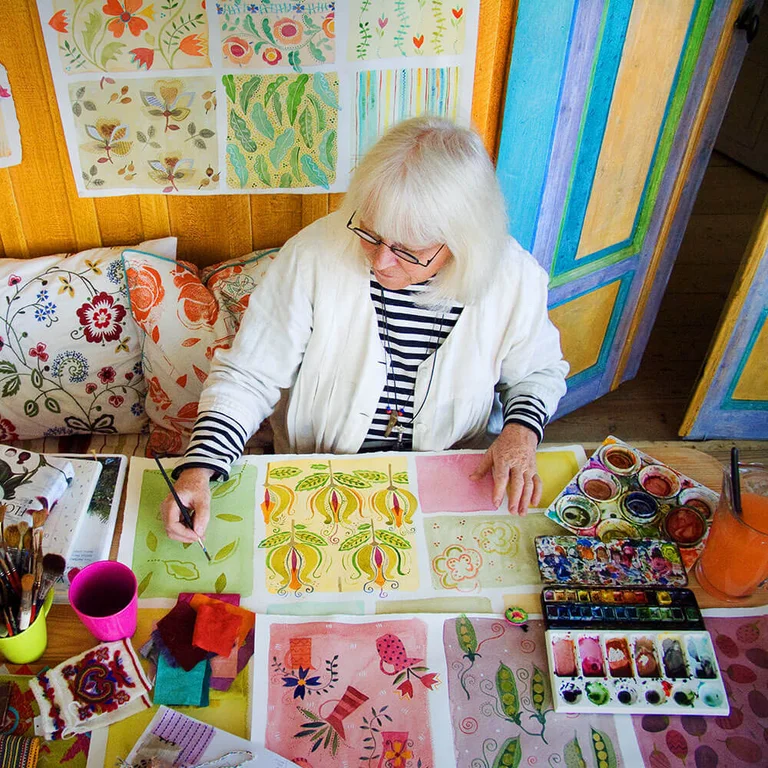
2017
Wins the “Best International Growth” award
Gudrun Sjödén receives an award for international growth and innovative design.
In 2017, Gudrun Sjödén was presented with the “Best International Growth” award at the Entrepreneur Of The Year gala in recognition of the company being a visionary and successful business. The award was confirmation of Gudrun’s impressive efforts since 1974. Over the years, Gudrun Sjödén has grown into a global brand with brick-and-mortar stores and a flourishing webshop that reaches customers around the world.
The judges praised Gudrun for having found a unique niche in an extremely competitive industry, and for recognising, at an early stage, the potential of e-commerce – a channel that has revolutionised consumer habits across the globe. One of the judges also highlighted Gudrun’s unshakable belief in her vision, which has shaped her brand.
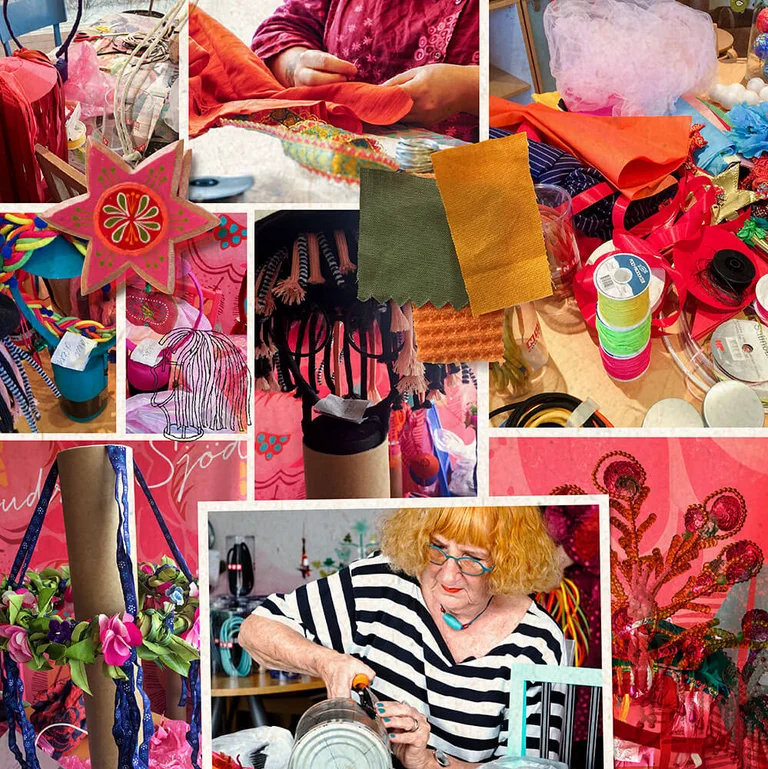
2018
A Colourful Universe
Gudrun Sjödén’s colourful world went on display at the American Swedish Institute.
In 2018, the “Gudrun Sjödén – A Colourful Universe” exhibition held at the American Swedish Institute in Minneapolis gave customers in the US the opportunity to step inside Gudrun’s unique and richly colourful world.
The exhibition treated visitors to a journey through Gudrun’s creative universe and a look at her career, inspiration and work of driving one of Sweden’s largest fashion export companies with enthusiasm and commitment. There was also a collection of original watercolours, handcrafted textiles and a selection of garments that represented Gudrun’s career on display.
The American Swedish Institute, which is a non-profit organisation and a museum, highlights and celebrates important roles played by Swedes and Swedish Americans in the history and culture of the USA. Gudrun Sjödén’s exhibition was open to visitors for three months at the museum.
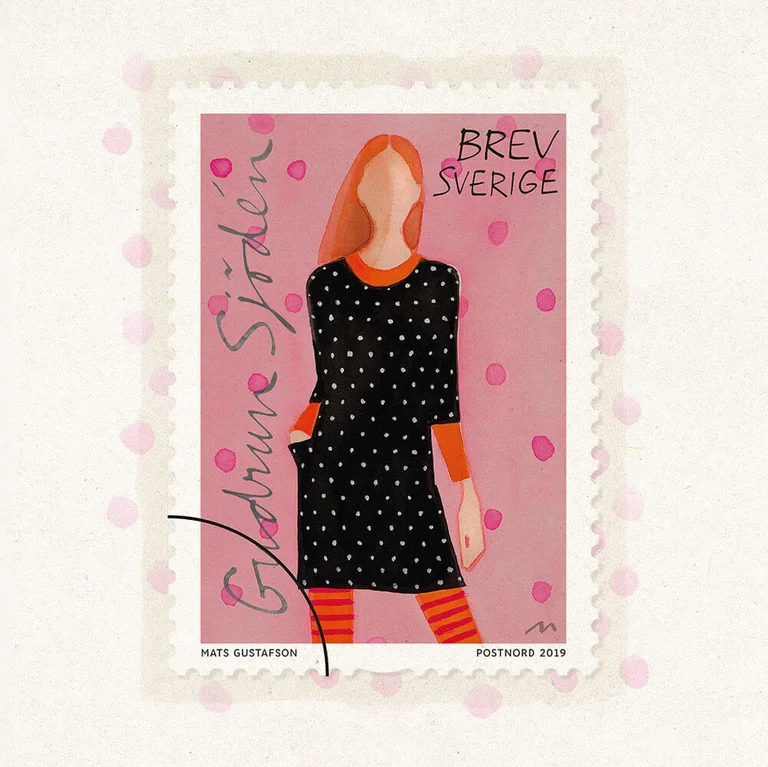
2019
Gudrun Sjödén appears on a stamp
The Swedish postal service issues a series of stamps to celebrate the country’s fashion industry.
In 2019, the Swedish postal service, PostNord, released five new postage stamps depicting Swedish fashion designers, as a tribute to the country’s prominent export role in the international fashion market. The creator of the stamp designs was the well-known fashion illustrator Mats Gustafsson, who interpreted clothes from five fashion houses – one of which was Gudrun Sjödén.
That dynamic colours and patterns have always been hallmarks of Gudrun’s designs was reflected in the choice of a dotted dress for her stamp. Gudrun asked for the background to be distinctive and lively, to make the stamp even more unique. So Mats Gustafsson created a pink, dotted background that worked really well with Gudrun Sjödén’s dotted dress.
The stamps, which combine art and fashion in a remarkable way, became a symbol for the inspiration that Swedish design continues to provide around the world.
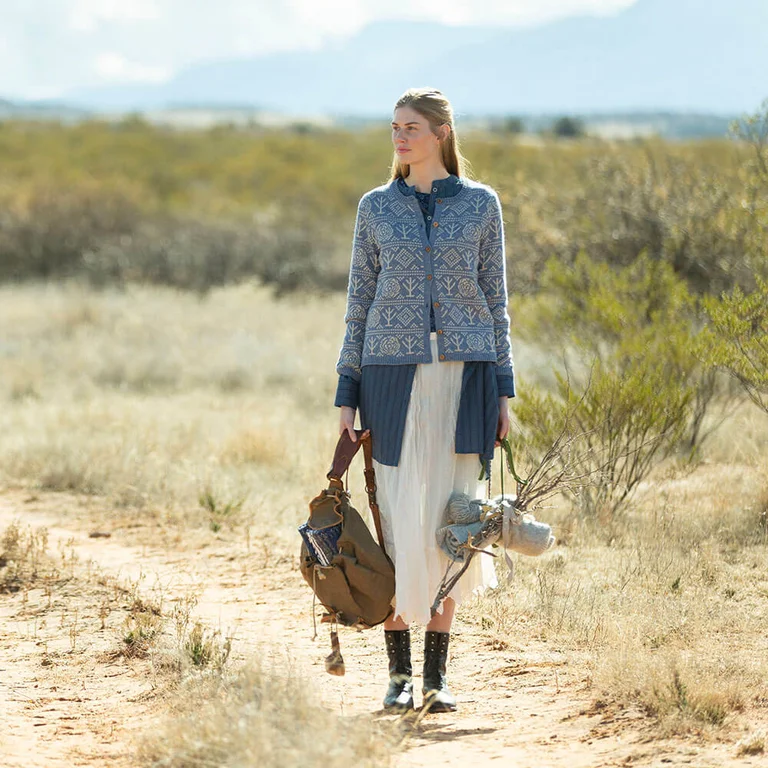
2019
Gudrun Sjödén Foundation
Supporting and promoting design, sustainable development and women’s entrepreneurship.
The Gudrun Sjödén Foundation was set up in 2019 and its long-term vision is to preserve and promote the values that form the bedrock of Gudrun Sjödén’s activities. The objective of the foundation is to support projects that are committed to the same core values, which embrace design and crafts, global sustainable development goals, women’s entrepreneurship and textile research. By awarding grants and providing funding for participation in courses and seminars, the foundation seeks to inspire and empower individuals and organisations in these areas.
Karin Larsson’s textiles collection, which celebrates and preserves an important cultural heritage, and Agrocel, an organisation that promotes organic cultivation of cotton, are two of the initiatives that the Gudrun Sjödén Foundation has supported. It has also made donations to the “One click for the forest” initiative, whose mission is to protect old-growth forests and their unique ecosystems in Sweden. The foundation strives to promote sustainable development and creative entrepreneurship, nationally and globally, through its involvement in these and similar projects.

2020
Acclaimed exhibition in a new location
Gudrun Sjödén spreads her colourful universe to the northwest coast of the USA.
In 2018, the “Gudrun Sjödén – A Colourful Universe” exhibition held at the American Swedish Institute in Minneapolis gave the American public a unique opportunity to step inside Gudrun Sjödén’s richly colourful world. Throwing the spotlight on Gudrun’s career, inspiration and work as the founder of the Gudrun Sjödén brand, the exhibition took visitors on an exciting journey through Gudrun’s creative universe. Original watercolours, handcrafted textiles and a selection of garments showcasing Gudrun’s distinctive design style were on display. The exhibition was open to visitors for three months and won widespread acclaim.
The success continued two years later when the exhibition was held at The National Nordic Museum in Seattle, which is dedicated to Nordic history and culture. “Gudrun Sjödén – A Colourful Universe” was open for six months and Gudrun was at the inauguration of the exhibition to meet visitors and talk about the ideas behind her artistic creations.

2020
Digital fashion show
Gudrun arranged a digital fashion show during the pandemic.
The corona pandemic forced the world to swiftly adjust to new circumstances, and social distancing became part of everyday life. In the autumn of 2020, Gudrun Sjödén took the opportunity to create something unique and adapted to the new normal – a digital fashion show.
Instead of a traditional catwalk with an audience, the show was recorded for customers to view on Gudrun Sjödén’s YouTube channel whenever and wherever they wanted. The show unveiled the brand’s winter collection with its bold colour combinations, dynamic designs and Gudrun’s creative design style. The clothes, music and props took viewers on an exciting fictive journey through Europe.
They were also treated to the stories behind the clothes and interviews from behind the scenes, which added a deeper dimension to the show. The digital fashion show became a symbol of adaptability in challenging times and is still available for viewing on YouTube for anyone looking for inspiration.

2022
Sunflowers for Ukraine
The bold sunflower design takes on new meaning.
The bold sunflower design has featured in Gudrun Sjödén’s collections since 2010. In 2022, the brilliant sun-yellow flower took on a new and deeper meaning for the brand. It created sunflower collections in a show of solidarity for the people of war-struck Ukraine, and all the proceeds from the sale of the sunflower products were donated to the UNHCR, the UN Refugee Agency, to support its vital humanitarian work in the country.
The sunflower design was not chosen at random! The sunflower is the national flower of Ukraine and has become a symbol of hope and unity amid the ongoing crisis. The sunflower collection of clothes and homeware is still on sale today. Every penny from the sale of the sunflower products continues to be donated to the UNHCR.
An account of Gudrun Sjödén’s “Sunflowers for Ukraine” initiative and the 6.3 million kronor donated to the UNHCR was included in the organisation’s 2023 annual report.

2023
Launch of UNIQUM
The Uniqum collection is Gudrun Sjödén’s tribute to unique handicrafts.
The Uniqum collection is Gudrun Sjödén’s tribute to unique handicrafts. Text: In 2023, a new star saw the light of day in Gudrun Sjödén’s creative universe – the Uniqum product label. This limited-edition line of clothing is created with much love and care by Gudrun herself.
The Uniqum collection reflects her creative process, which always begins with a watercolour painting. The ideas emanating from the first brushstroke materialise into real clothes. Gudrun describes it as a process that flows from the mind, through the heart and out through the hand. This symbiotic relationship between thoughts and feelings creates unique clothing whose colours and patterns set them apart from the standard collections for the seasons.
Uniqum celebrates individuality and uniqueness. Each garment showcases her genuine artisanal skill and creativity, which makes them small works of art in themselves.

2023
Watercolour course in India
Gudrun’s co-workers learn creative watercolour skills in India.
Painting with watercolours has always been part of Gudrun Sjödén’s identity as an entrepreneur. After graduating from the University College of Arts, Crafts and Design in Stockholm in 1963, Gudrun put her watercolour brushes away, however, and almost 20 years had passed before she picked them up again. Since then, she has painted a steady stream of watercolours. Geometric designs, flowers and leaves – her imagination knows no bounds.
In 2023, Gudrun decided it was high time to share her passion for watercolour with her co-workers. Those who were interested in learning more joined Gudrun on a trip to India. There they honed their skills with a paintbrush in their hand, under the guidance of Gudrun herself. During their visit, they met up with some of the company’s suppliers who showed them collections being produced and fabrics being printed using the traditional hand block printing technique. They even got to try their hand at dyeing fabrics with indigo.
On returning to Sweden, the courses in watercolour painting continued at the head office in Stockholm, with Gudrun happily sharing her wealth of creativity and experience.

2024
Outlet store in the USA
Opens its first colourful outlet store in the USA.
Gudrun Sjödén makes a strong impression once again in the USA, this time with an inspiring outlet store in Minneapolis which opened its doors in the summer of 2024. Gudrun’s own watercolours decorate the hand-painted walls and welcome the customers who enter the store to explore Gudrun’s unique world. The calm and harmonious atmosphere provides an impactful setting for the richly patterned clothes.
After closing its stores in California in the 1990s and then making a triumphant come-back with a store in New York, Gudrun Sjödén recaptured the hearts of its American customers with the outlet store in Minneapolis. A thrilling addition to Gudrun’s colourful universe.
This is Gudrun Sjödén’s second outlet store. The other is in Stockholm, where customers can find new gems and unique vintage styles at outlet prices, with the same passion for colour and design.

2024
Gudrun Sjödén celebrates 50 years
The world’s most colourful 50-year-old.
2024 is a milestone year, marking 50 years since Gudrun seized her dream of creating her own brand. After its early days of selling clothes to department stores, the business has grown over the years into an international fashion company that today has 22 stores worldwide. Gudrun Sjödén’s first catalogue was a simple two-page folder. Customers today can enjoy hours of browsing thick catalogues filled with colourful and inspiring illustrations. Motifs, patterns and designs have come and gone. Some have appeared constantly since the 70s.
The company’s 50th anniversary is being celebrated in style, with Gudrun herself at the helm. A unique Anniversary collection has been released with creations that breathe new life into popular patterns. A guide book takes readers along on some of Gudrun’s many exciting trips. And an exhibition is being staged to showcase five decades of creativity and fashion history.
At the age of 83, Gudrun hopes to enjoy many more active years. It is her dream that her brand will live on to celebrate its 100th anniversary – and that 2024 is just the start of the next major chapter.






